2 nights in Radisson (Near the airport)
Zurich is the largest city in Switzerland and is located at the northwestern tip of Lake Zurich. It is a great place to begin your Swiss adventure. On the day we reached Zurich, we checked into our hotel in the morning and decided to visit Rhine Falls. The train station was a 10 minute walk from our hotel.
- Rhine Falls
- Zurich Old Town
- Rathaus (Town Hall)
- Grossmünster church
- Fraumünster (Women’s Church)
- Münsterhof
- View of old town Zurich from Lindenhof
- Cruise on Lake Zurich
- Zurich GuruWalk
- Uetliberg
Rhine Falls – Plan on spending 3-4 hours here. As mentioned before, we had bought the Swiss travel pass and we decided to take the train to Rhine Falls. In 55 min we were at Neuhausen am Rheinfall station which is on the northern banks of the falls. Entry to the falls area from this end is free.
Europe’s largest waterfall is a breathtaking 23m tall and 150m wide as it cascades down into the Rhine river. There are a few things you can do here –
- Admire the falls from viewpoints in front of the falls
- Take a boat ride close to the falls
- Hike to Laufen Castle on the southern bank
Admire the falls from viewpoints – There are many places in front of the falls from where you get a fantastic view of the falls as well as the Laufen Castle.

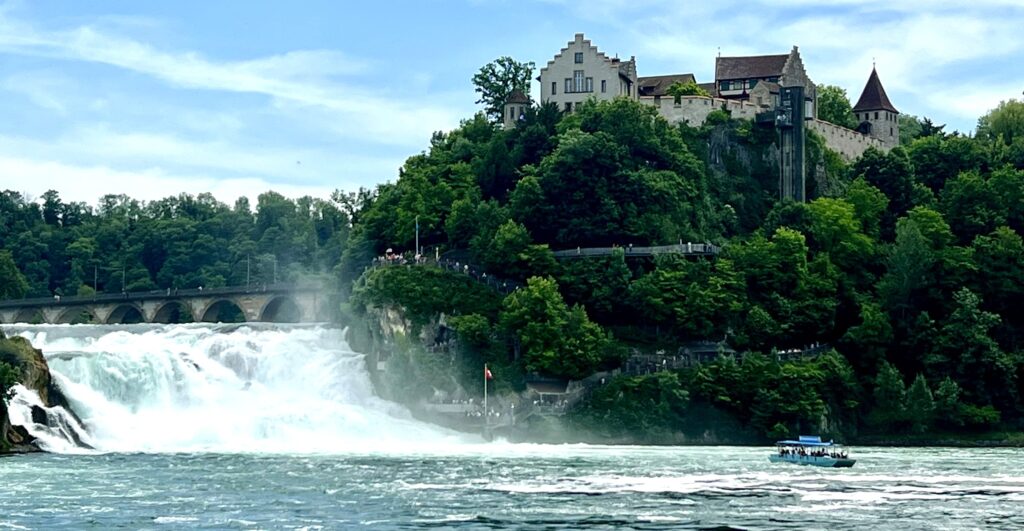
Take a boat ride close to the falls – There are 4-5 boat ride options that lasts 15-30 minutes. We took the yellow boat tour that included a stop at the Mittelfelsen (Middle Rock), where you can climb steps to a viewing platform. This tour takes you close to the falls and allows you to disembark on the rock for about 20 minutes to climb the stairs and enjoy the view. You have to pay for all the boat rides as they are not included in your Swiss Travel pass.
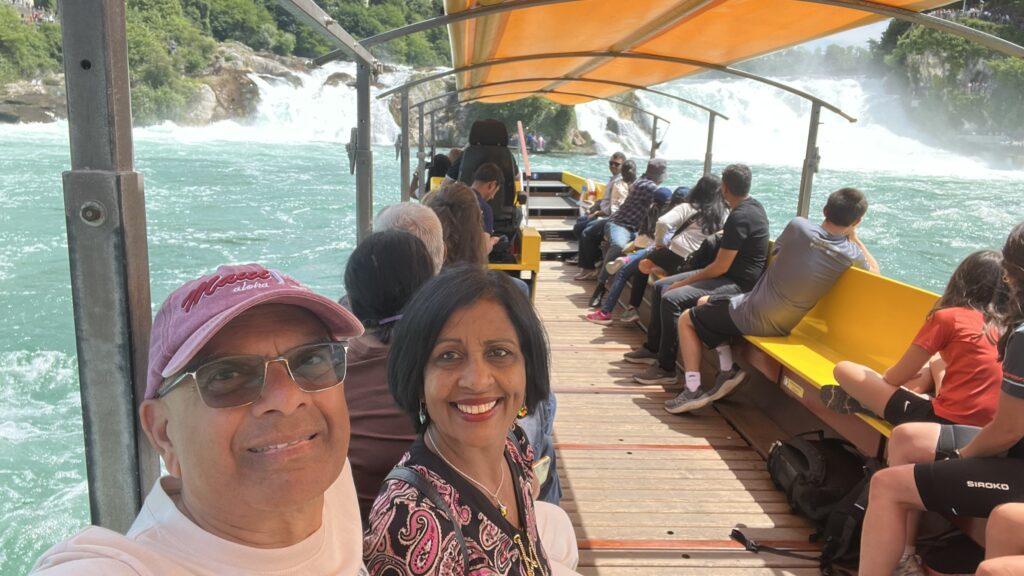
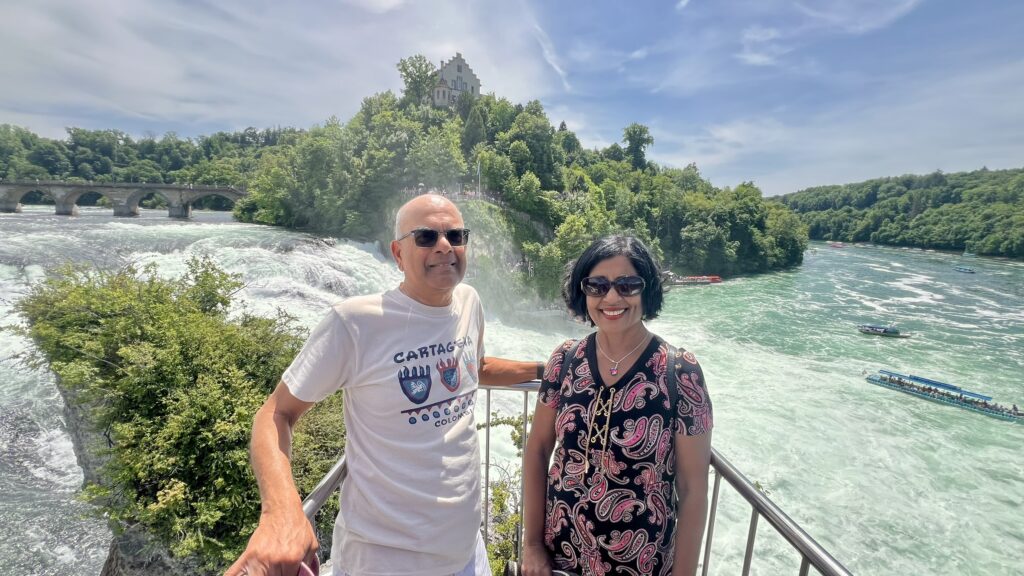
Lunch – After the boat ride, we had lunch of Indian food at one of the restaurants – Samosa, Chole and Rice.
Hike to Laufen Castle on the southern bank – After lunch, we hiked to the castle which was a 15-20 minute, slightly uphill walk and across a bridge, followed by a flight of stairs to the entrance of the castle. A Panoramic glass lift takes you down to a viewing platform on the southern bank (5 CHF for the lift round trip)
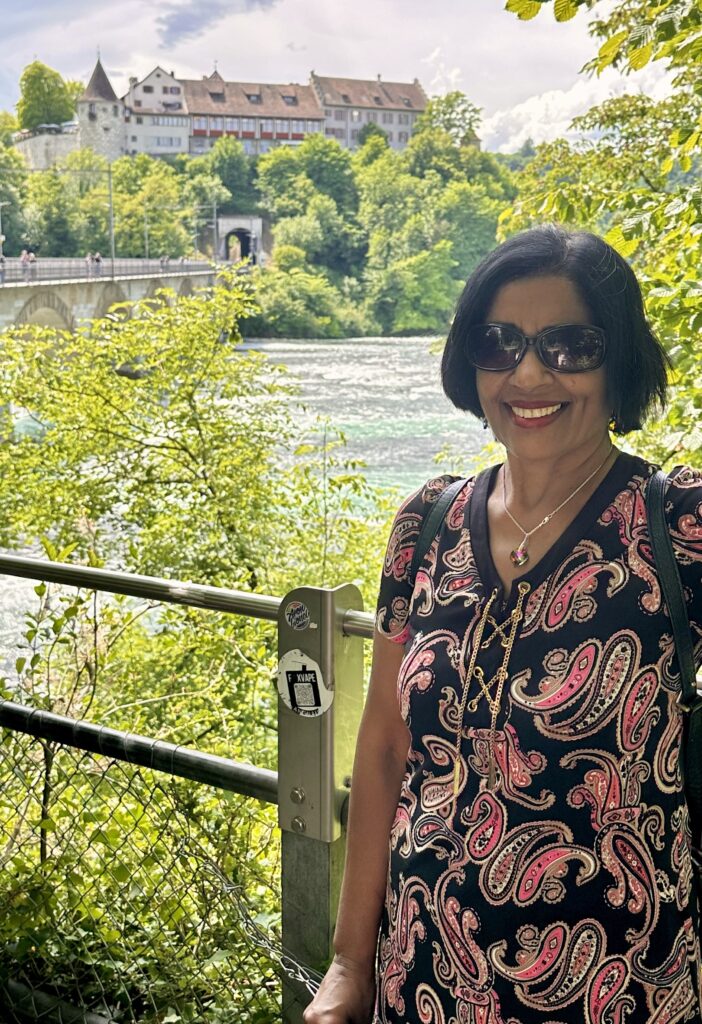
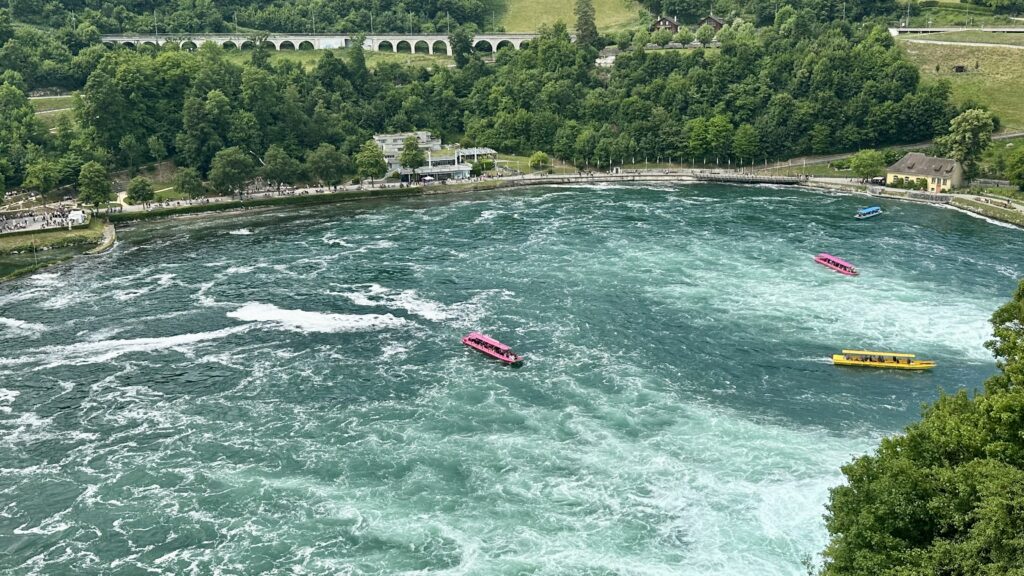
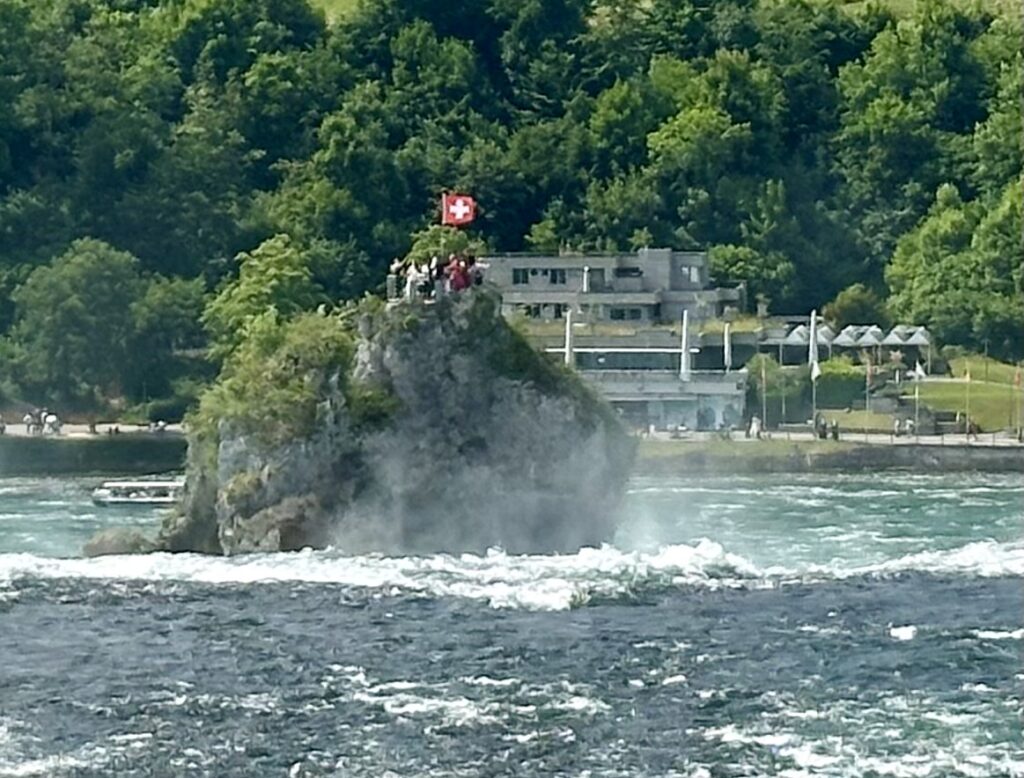
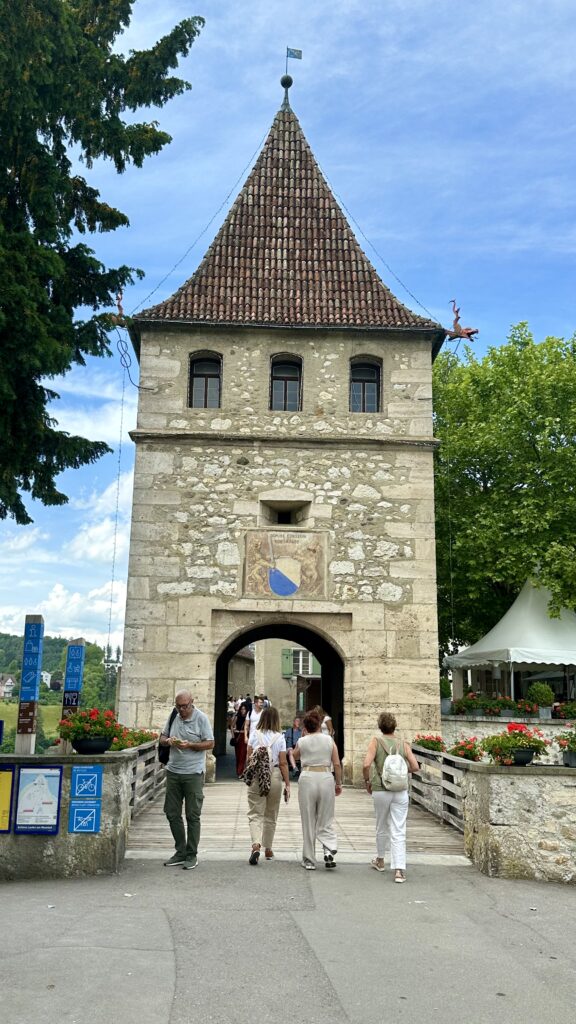
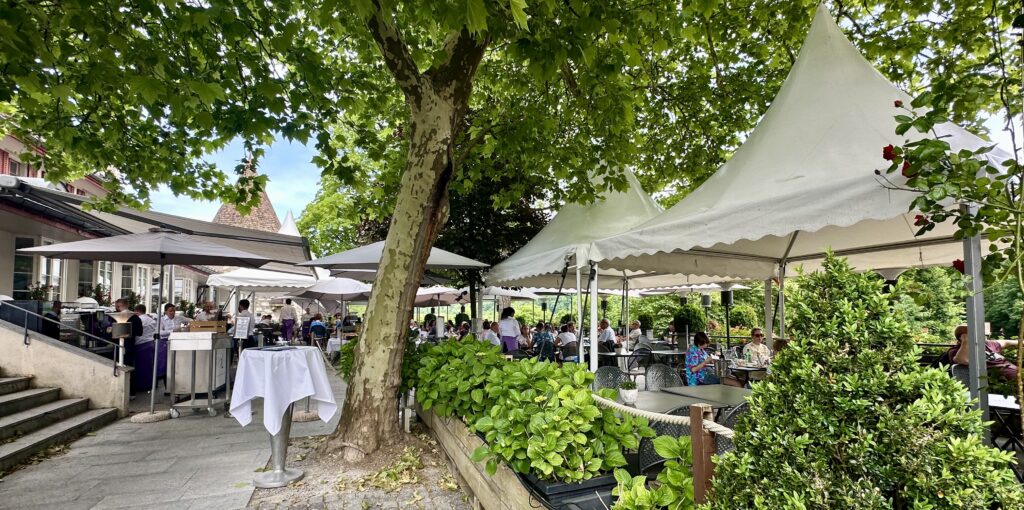

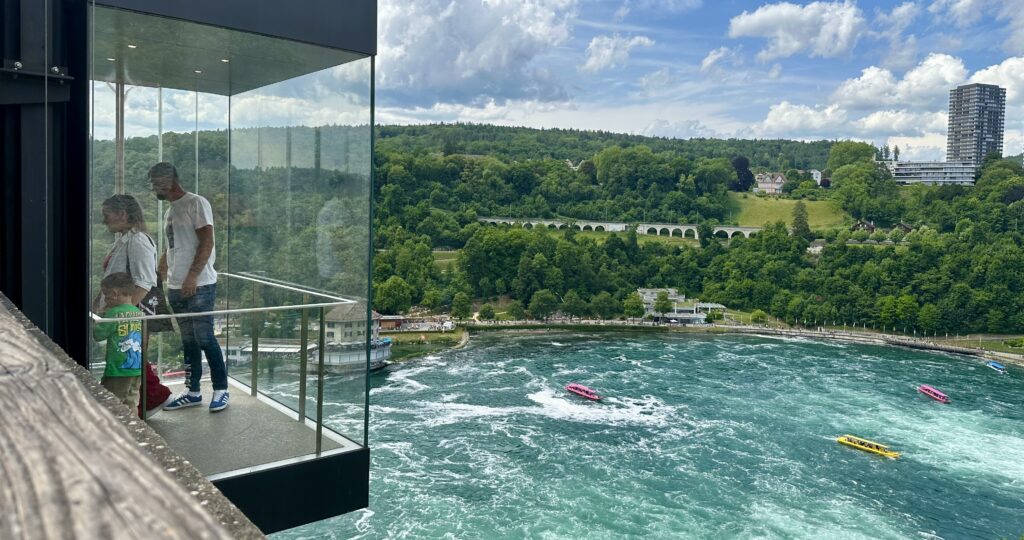
Old Town Zurich – We took a train to the main station in Zurich. From the station, it is a 10 min walk to old town, where we walked along the Limmat river quite aimlessly, browsing bakeries and shops, exploring some of the side streets and alleys. The Limmat River divides the old town into two sections with many short bridges. You can easily crisscross back and forth as you explore Zürich.
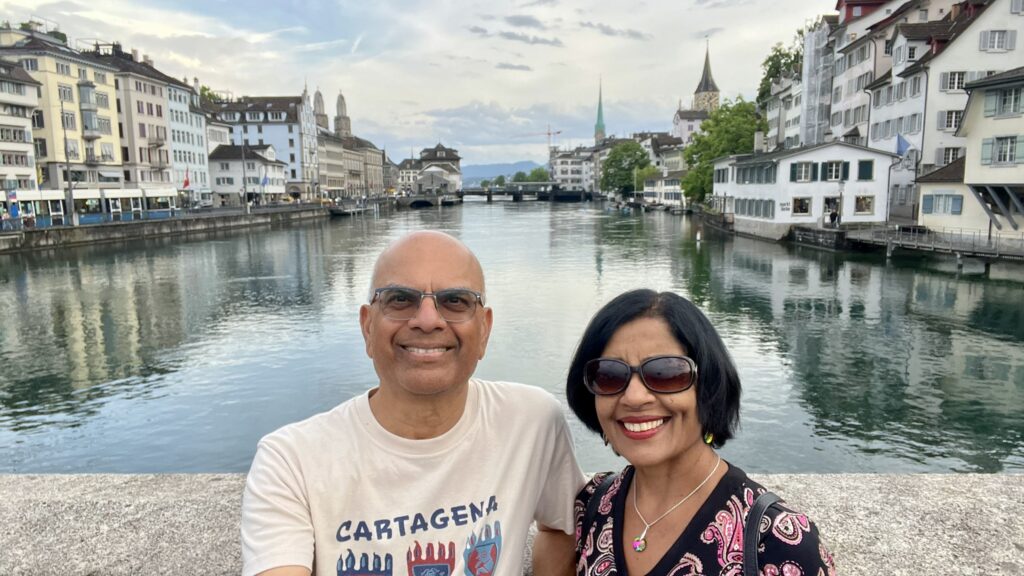
Limmatquai – We walked along this picturesque street that runs along the banks of the Limmat River through the heart of the city’s Old Town. You will pass by many of the city’s landmarks like the Grossmünster, Wasserkirche, Rathaus(Town Hall), numerous cafes, and restaurants.
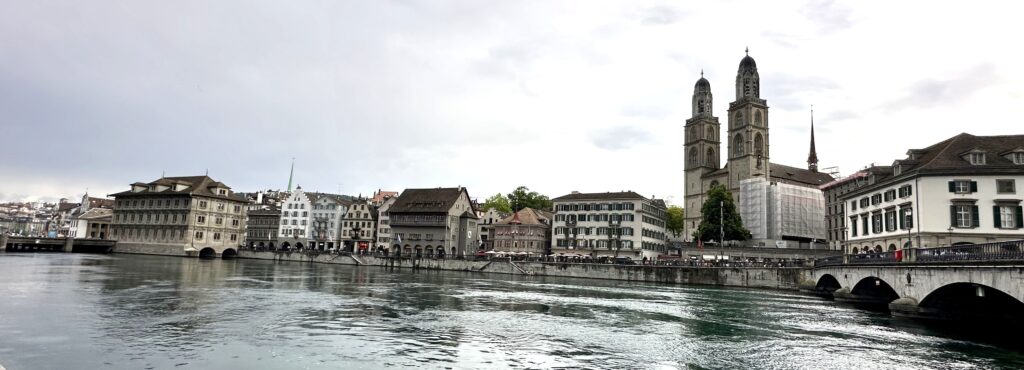
Rathaus (Town Hall) – Zürich’s Town Hall, or Rathaus Zürich, is a prominent Renaissance-style building that is easy to spot and is located at the corner of Rathausbrücke, on the eastern banks of the Limmat river. Constructed between 1694 and 1698, the building serves as a seat for both the cantonal and city parliaments. Its façade, adorned with intricate stonework and sculptures, reflects the grandeur of the period.
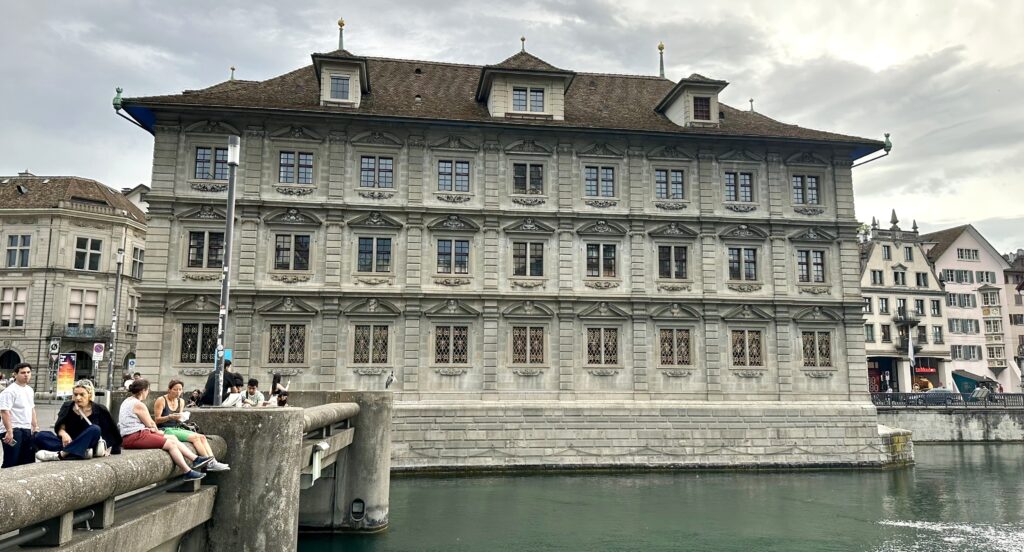
Grossmünster – Standing in an open terrace above river Limmat, Grossmünster is a Romanesque style Protestant church. It is one of the 4 main churches in the city. Its twin towers dominates the city skyline and they can be seen from many places around the city. Built between the 11th-13th century, its 3-aisled galleried basilica dates back to 1100. The two towers were first erected between 1487 and 1492. Originally, they had high wooden steeples, which were destroyed by fire in 1763, following which the present neo-Gothic tops were added and completed in 1787. The church features modern stained-glass windows which was added in 1932.
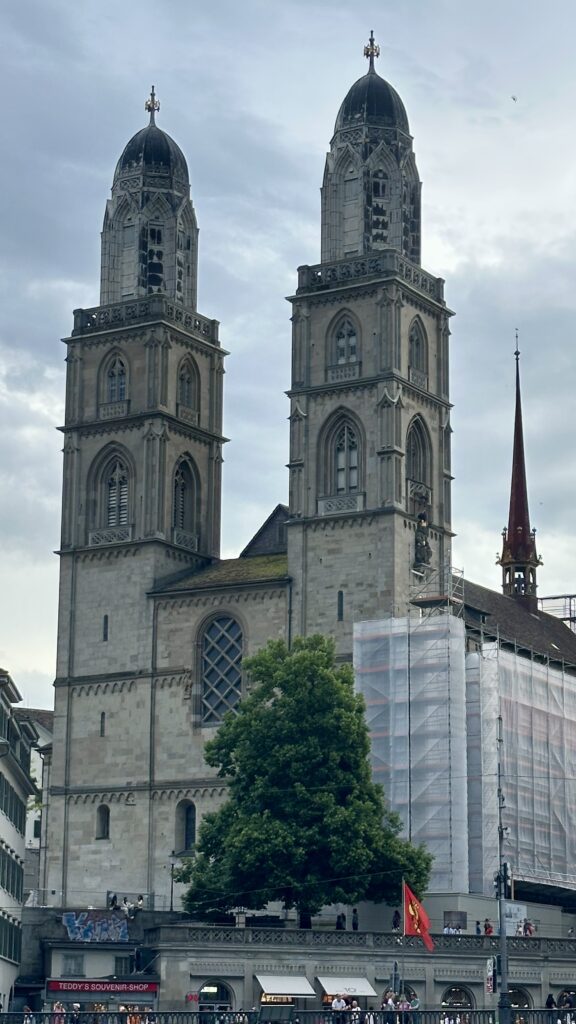
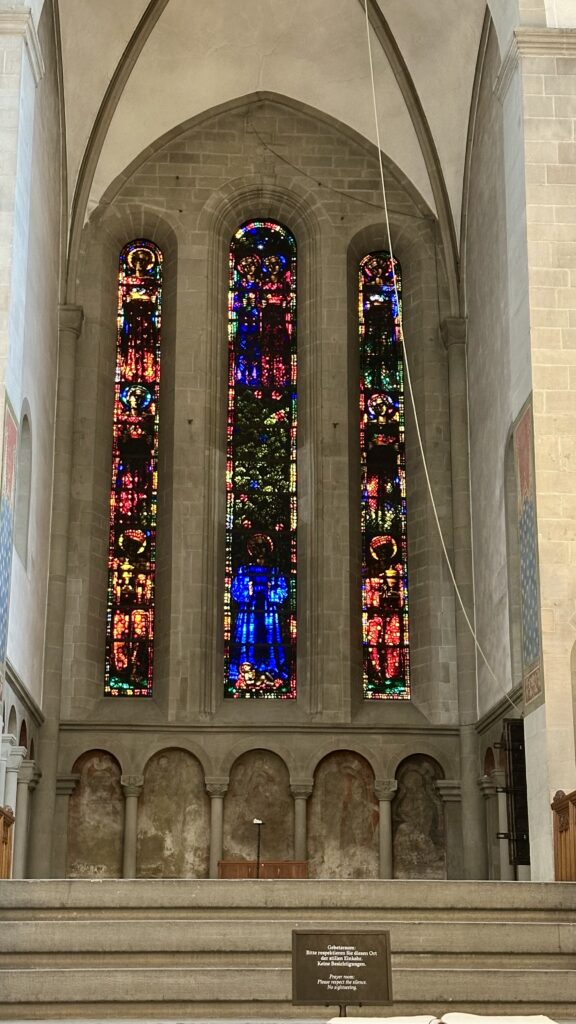
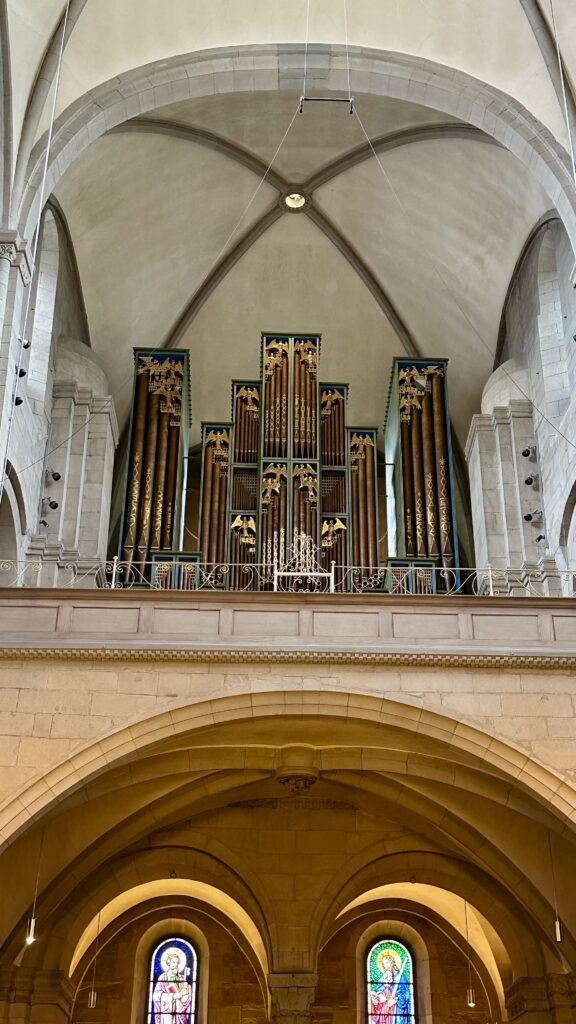
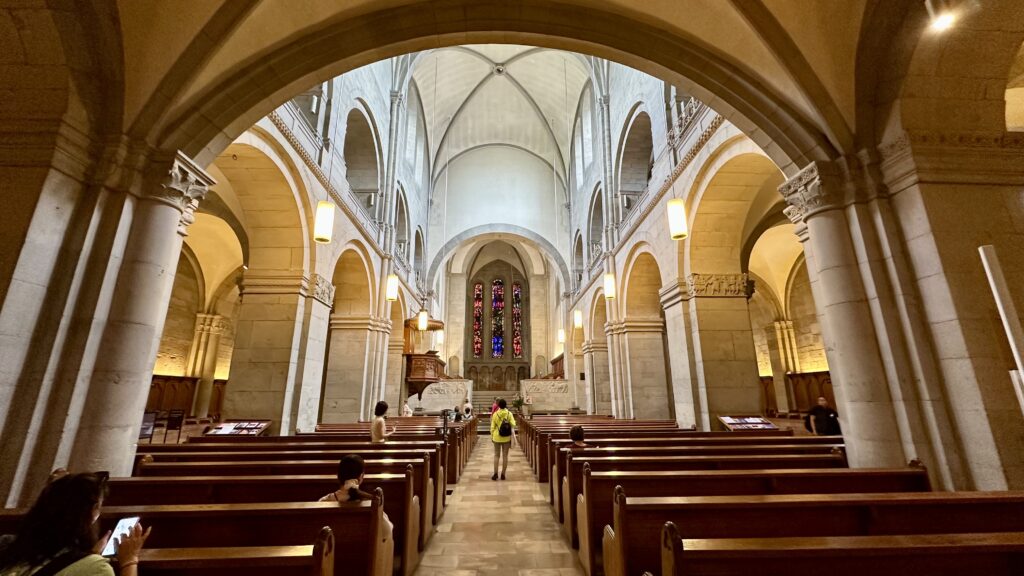
The church interior and the crypt are free to visit. 5 CHF to climb the tower.
Fraumünster (Women’s Church) – After visiting the Grossmünster, we walked across the Rathausbrücke to the western bank of the Limmat to check out Zurich’s other main protestant church – Fraumünster and its prominent green steeple. The church was founded in 853 by Emperor Ludwig for his daughters, Hildegard and Bertha, and built on the remains of a former abbey for aristocratic women. Until the high Middle Ages, the head of the convent was also governor of the city. 5 CHF to visit the church interior.
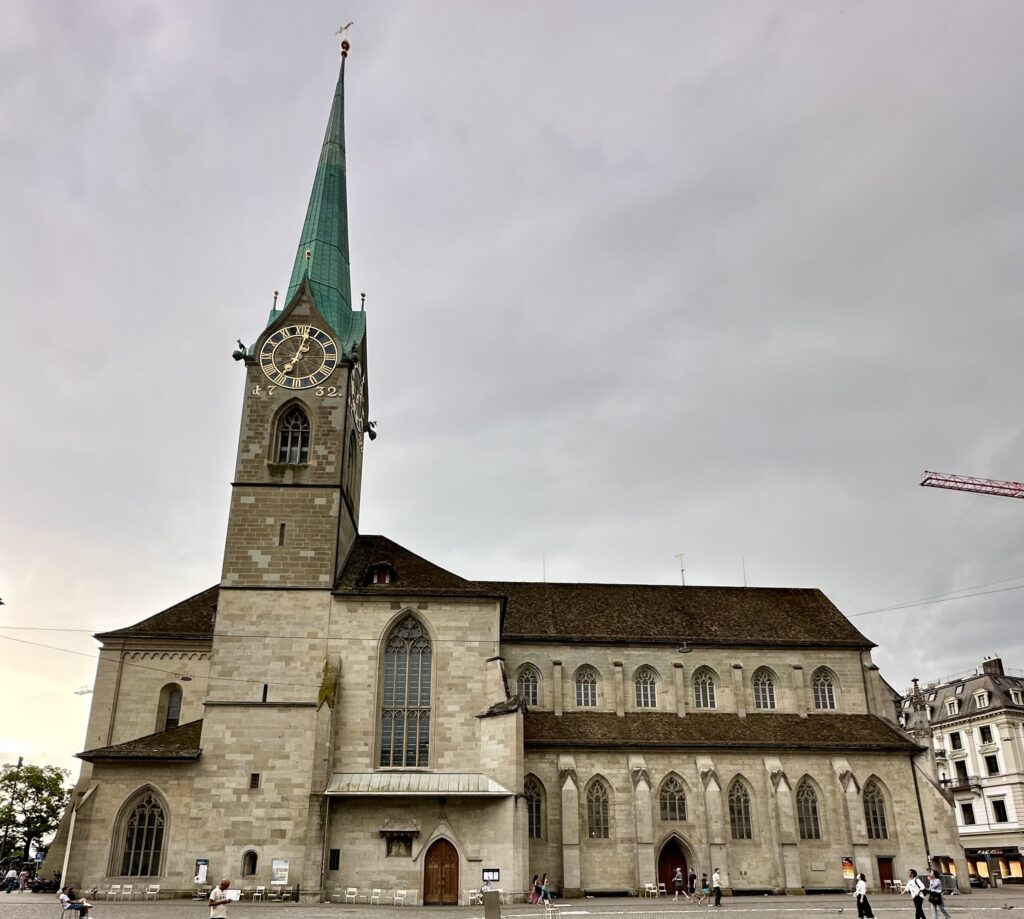
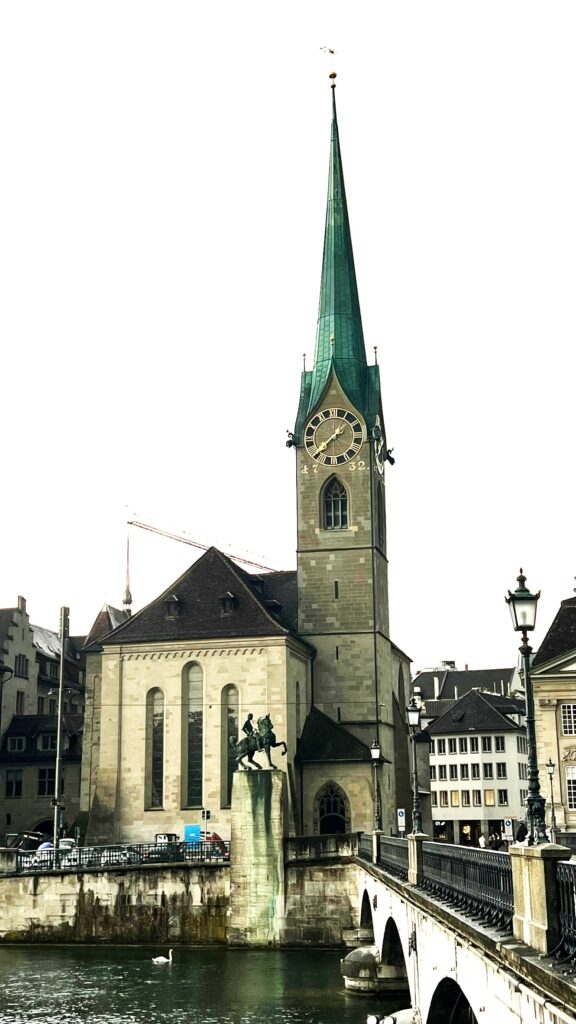
Modern features of the church include stained glass windows by Marc Chagall and Augusto Giacometti, and the largest organ in the Canton of Zurich. The vividly colored stained-glass windows depict biblical stories.
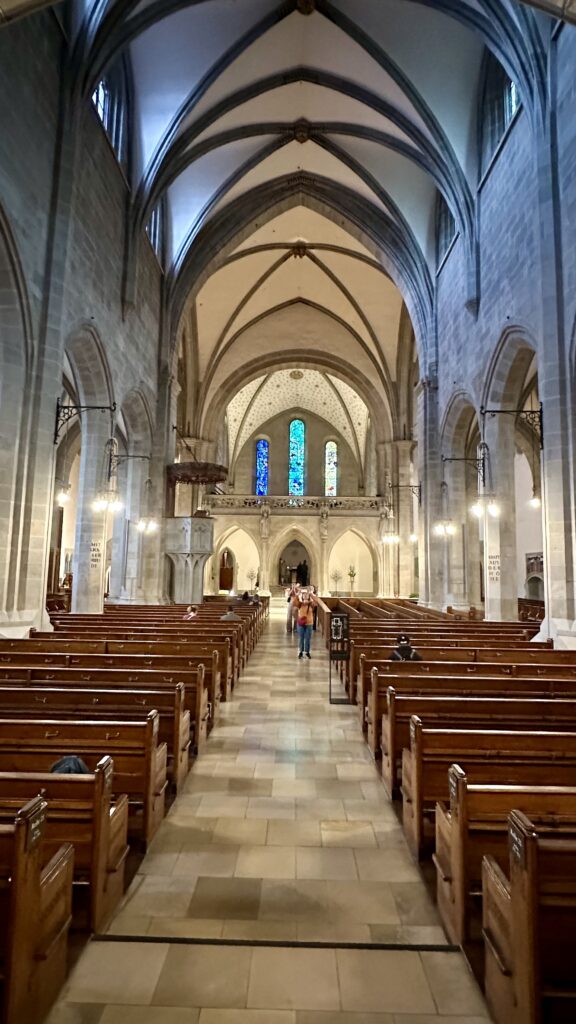
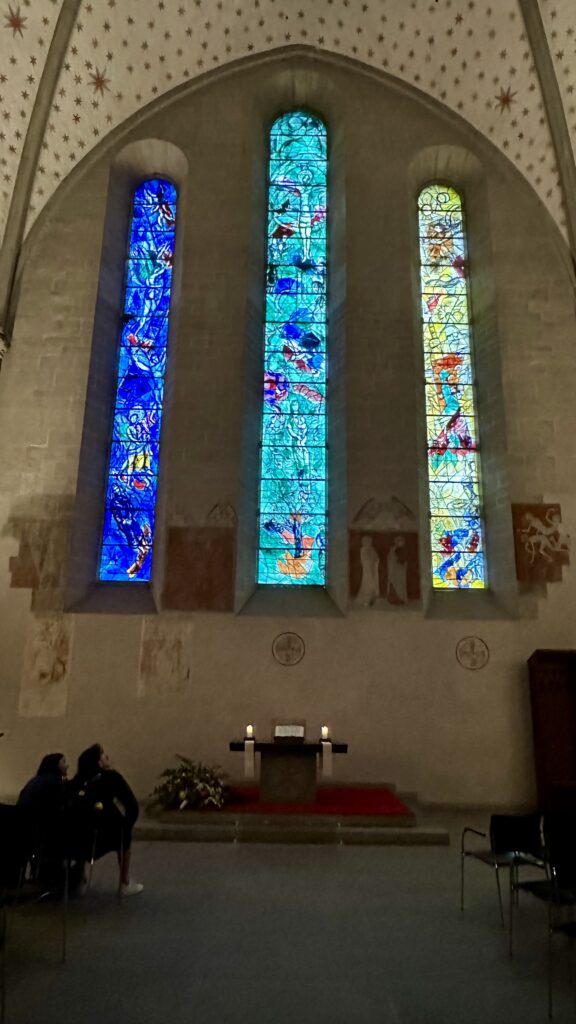
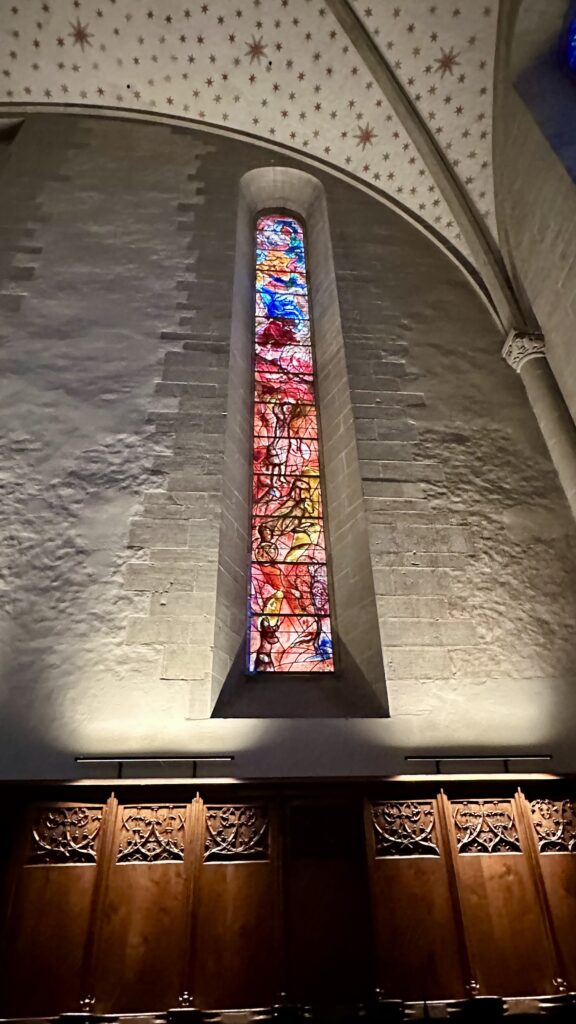
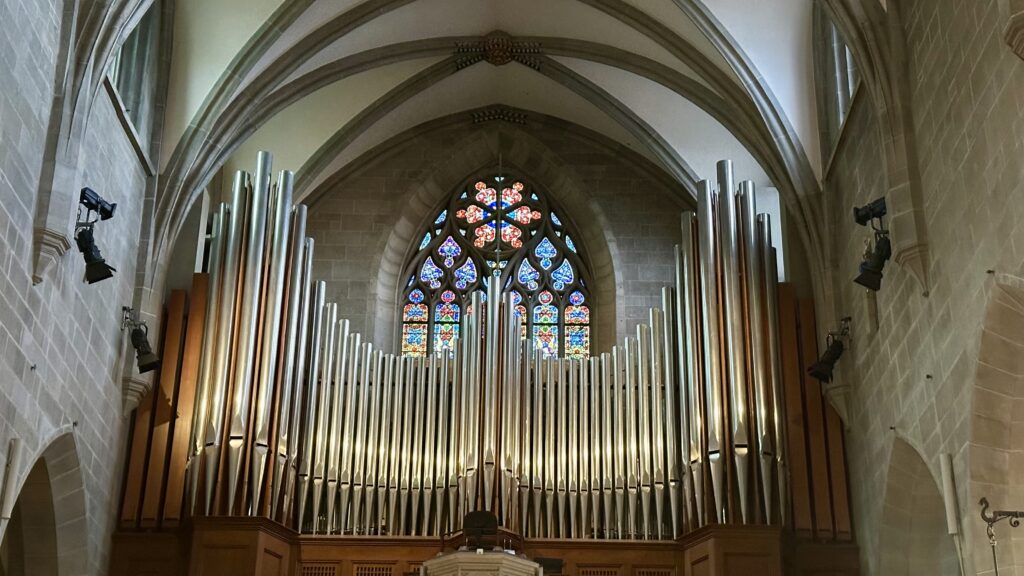
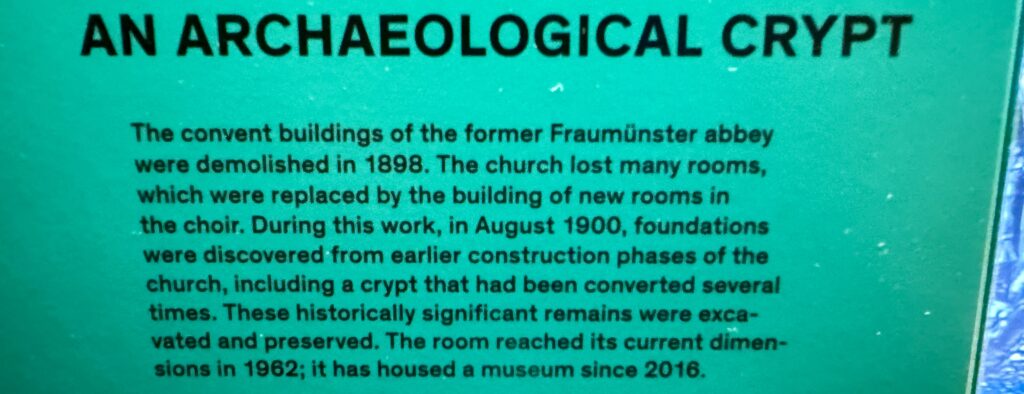
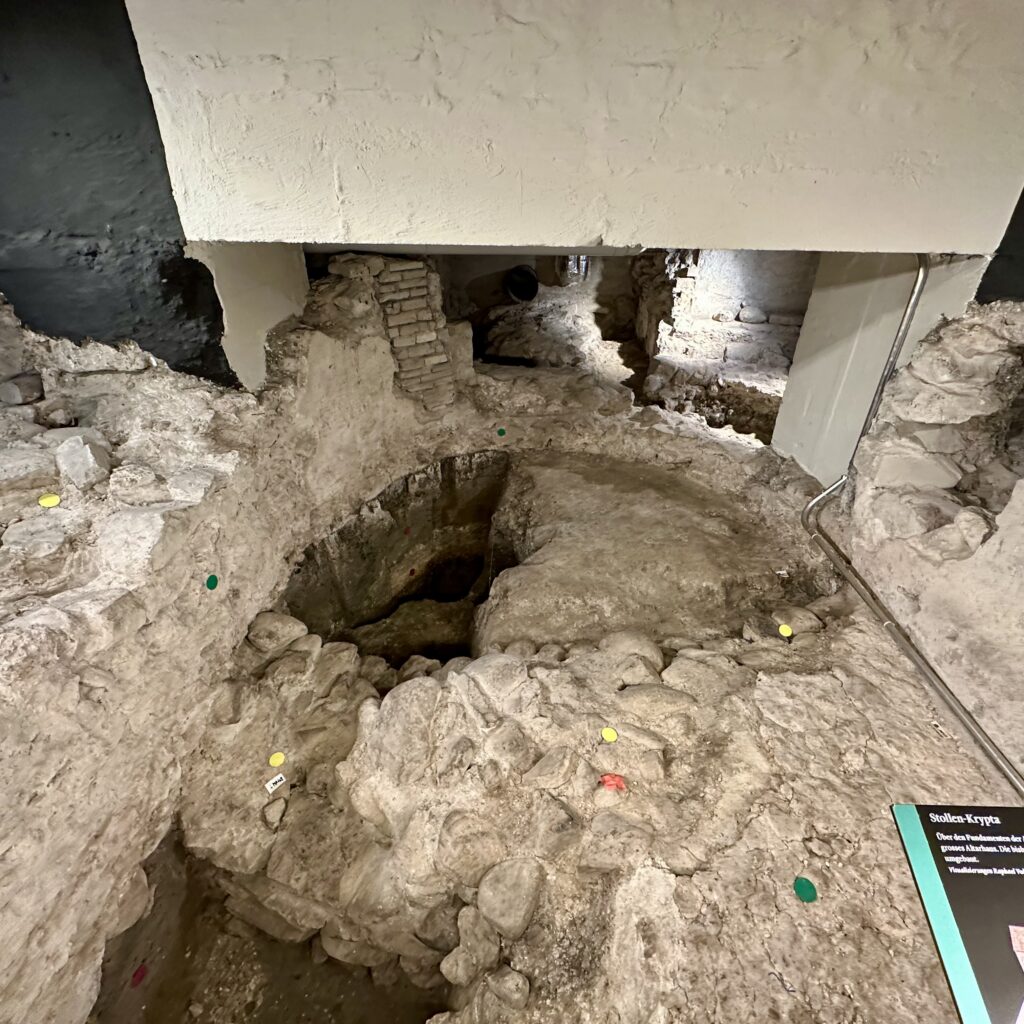
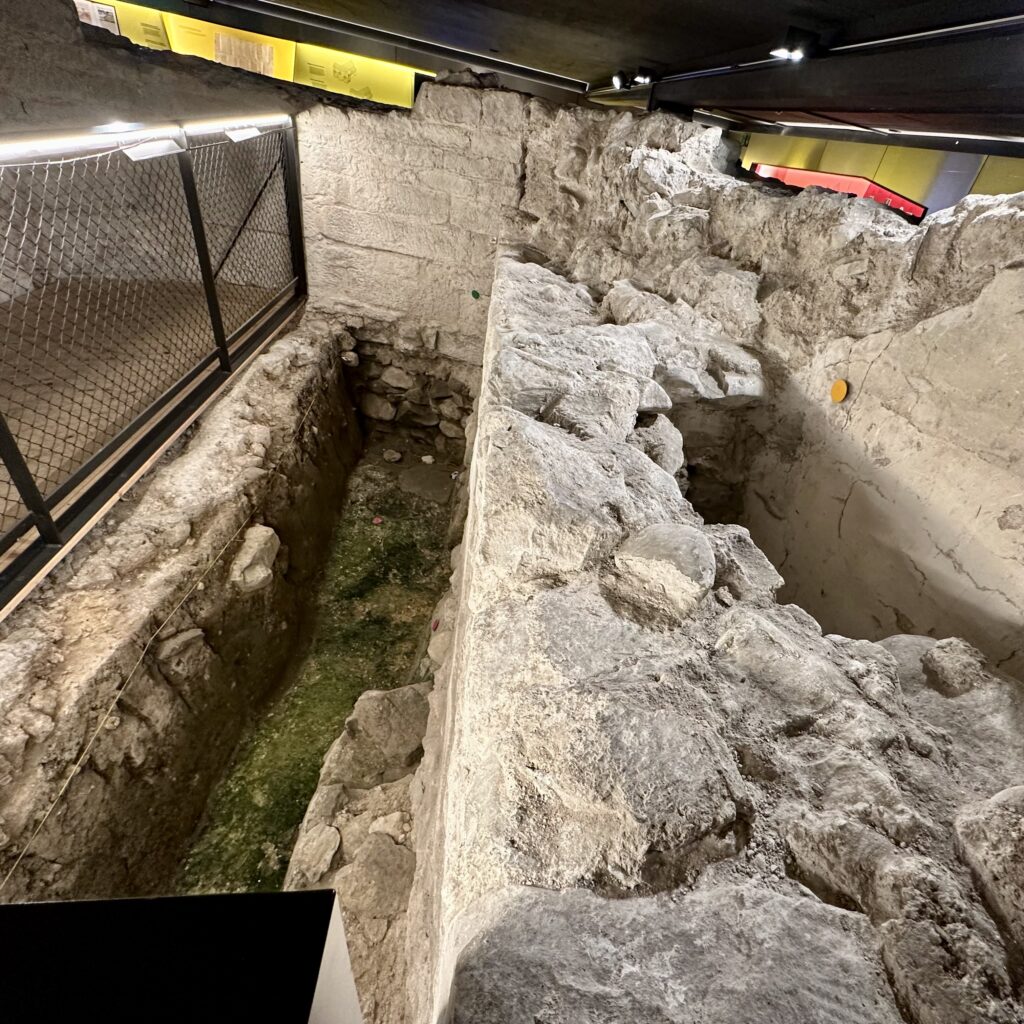
Cloisters of Fraumünster – A Romanesque cloister was built on the south side of the church in the 12th century and moved to its current location in 19th century. Today, the cloister features frescoes by Paul Bodmer that depict the church’s founding legend and the lives of Zurich’s patron saints.
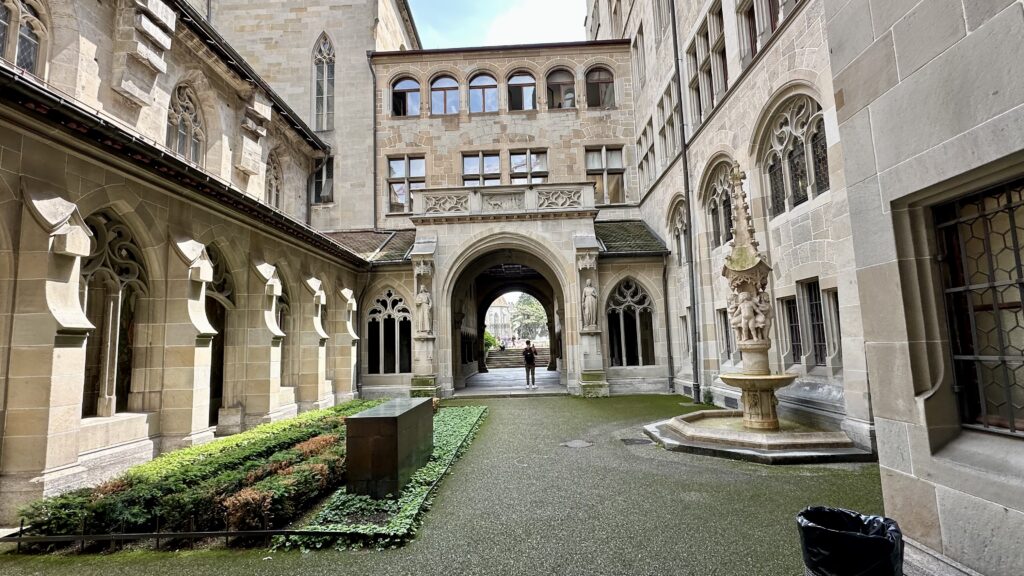
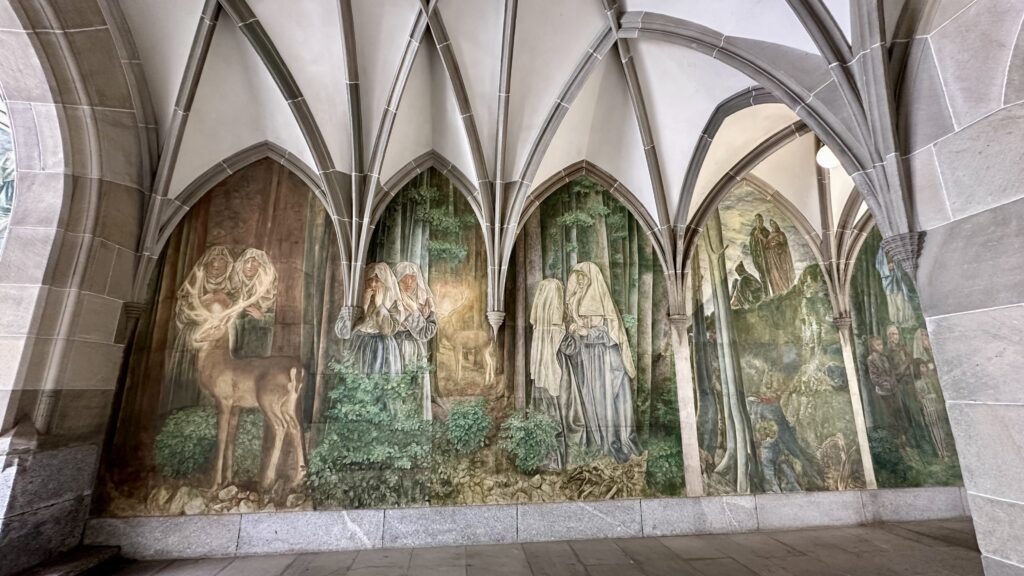
Münsterhof – Located next to Fraumünster Church, Münsterhof is the largest town square in Zürich’s Old Town and is surrounded by historical buildings and landmarks. The square has been a central part of Zürich’s history, serving as a marketplace and a gathering place for centuries. Today, Münsterhof hosts various cultural events and markets.
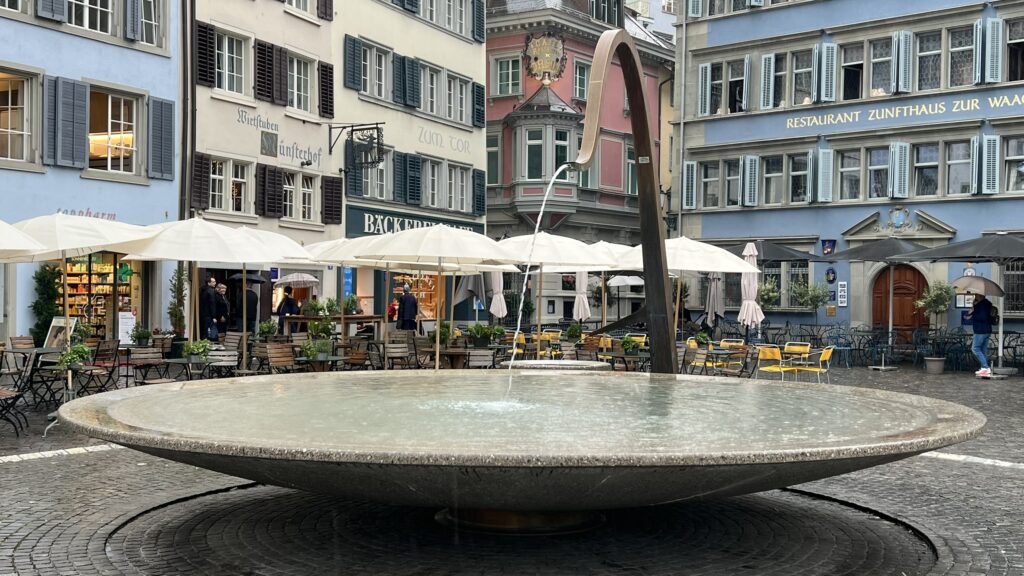
View over Zurich’s old town from Lindenhof – From Fraumünster’s, we continued walking up towards Lindenhof. The narrow street here rises up sharply and opens up to a a huge tree-shaded park or square with benches. This was the location where the Romans built their fortified settlement in the fourth century to defend against migrations from the North.
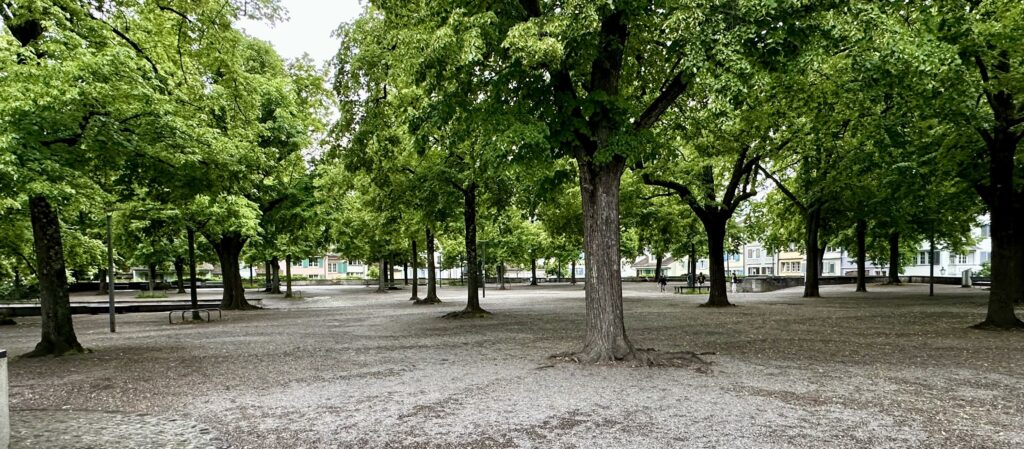
Today, this popular public square is known for its sweeping views of the city and the Limmat River.
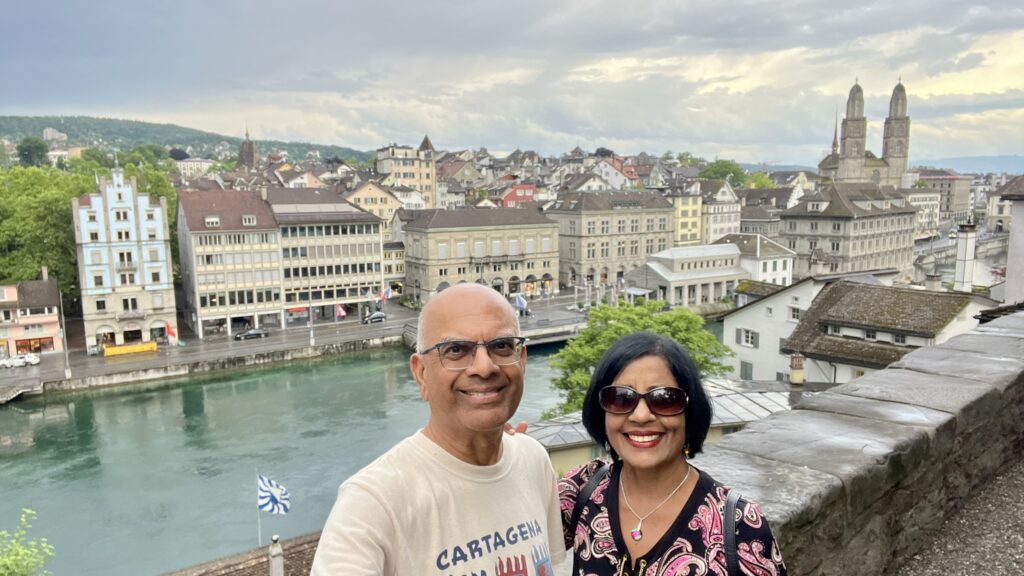
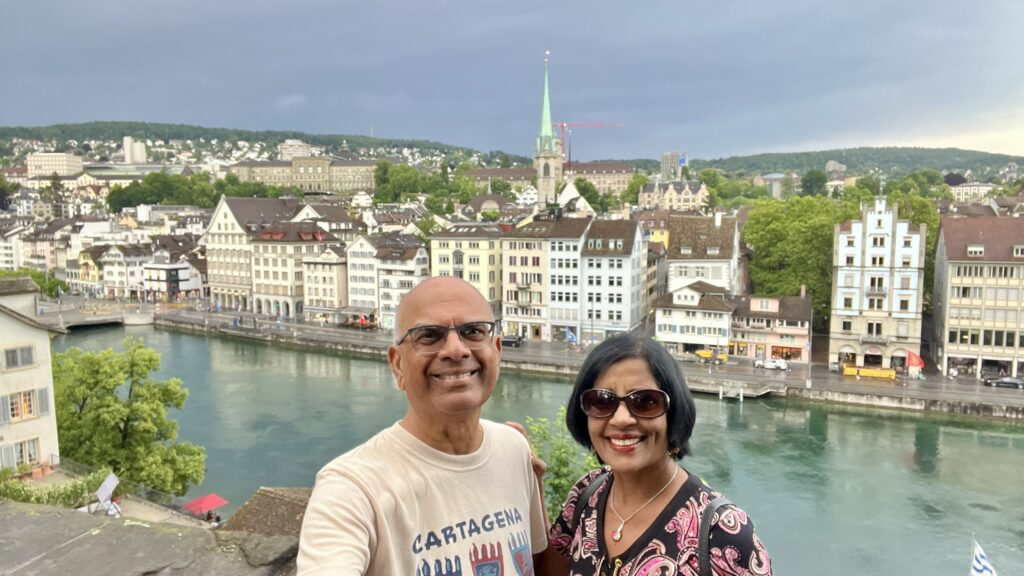
About ETH Zurich (Federal Institute of Technology Zurich) – is a public university that was founded in 1854 with the a mission to educate engineers and scientists. The university focuses primarily on science, technology, engineering, and mathematics and ranks among Europe’s best. There are 32 Nobel laureates associated with ETH Zurich, with Albert Einstein being its most famous alumnus. Albert Einstein studied at ETH Zurich (then called the Polytechnikum) from 1896-1900, earning a diploma in mathematics and Science. He later returned as a professor of theoretical physics from 1912 to 1914.
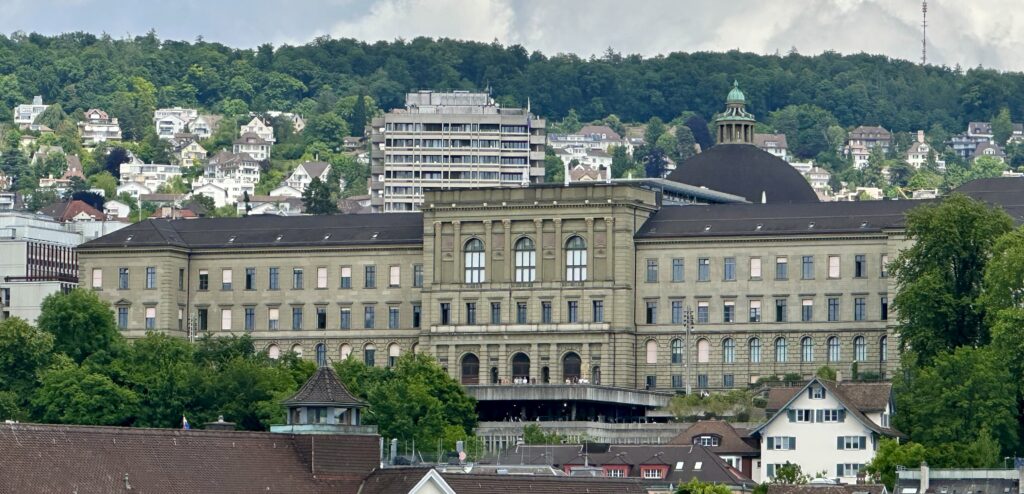
St. Peter’s Church – This church lies on the west bank of Limmat river and is the oldest parish church in Zurich. The original foundation walls from the 9th century are still visible under the choir. The city’s first mayor, Rudolf Brun acquired St. Peter’s in 1345 with all the associated privileges and obligations. His grave and monument can be found by the outer tower wall.
In 1538, the church acquired the largest clock dials in Europe, 8.7 meters in diameter, and still holds that record. Until 1911, the church tower was used as a fire watch post.
On the day we visited the church, was under renovation.
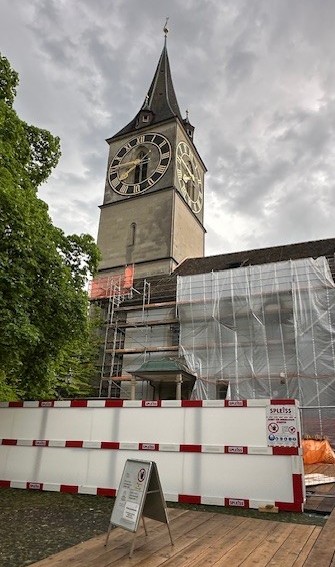
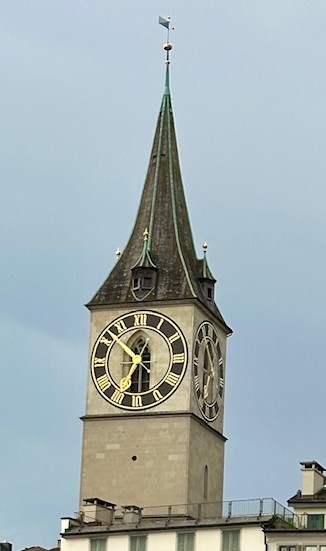
Cruising on Lake Zurich – With Swiss Travel Pass, cruising on the city lakes of Switzerland was free. We decided to go on a 1.5-hour cruise on Lake Zurich on the morning of our 3rd day in Zurich.
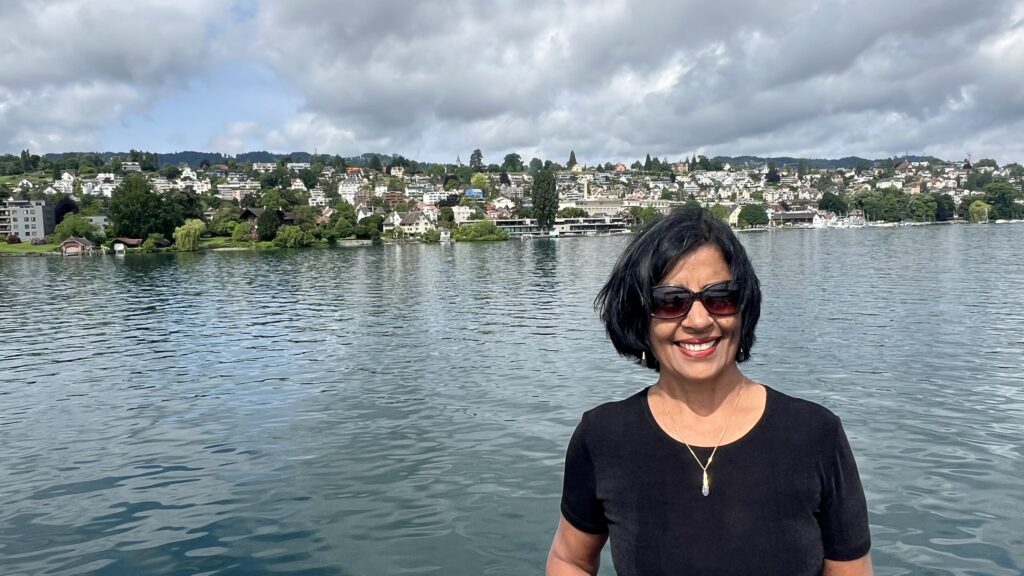

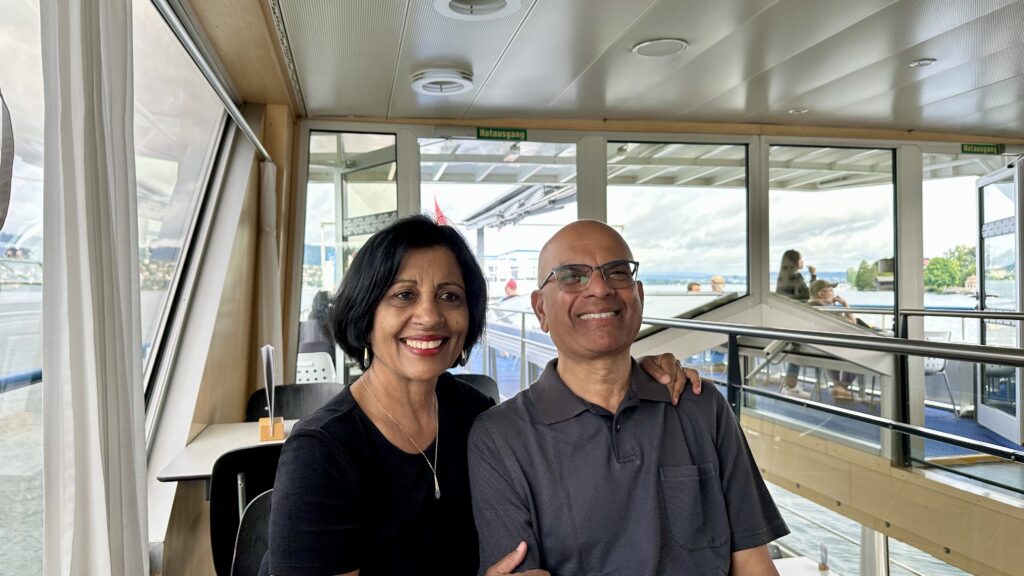
As we cruised on the lake, it was interesting to see many houses on the lake with a garage for the boat.
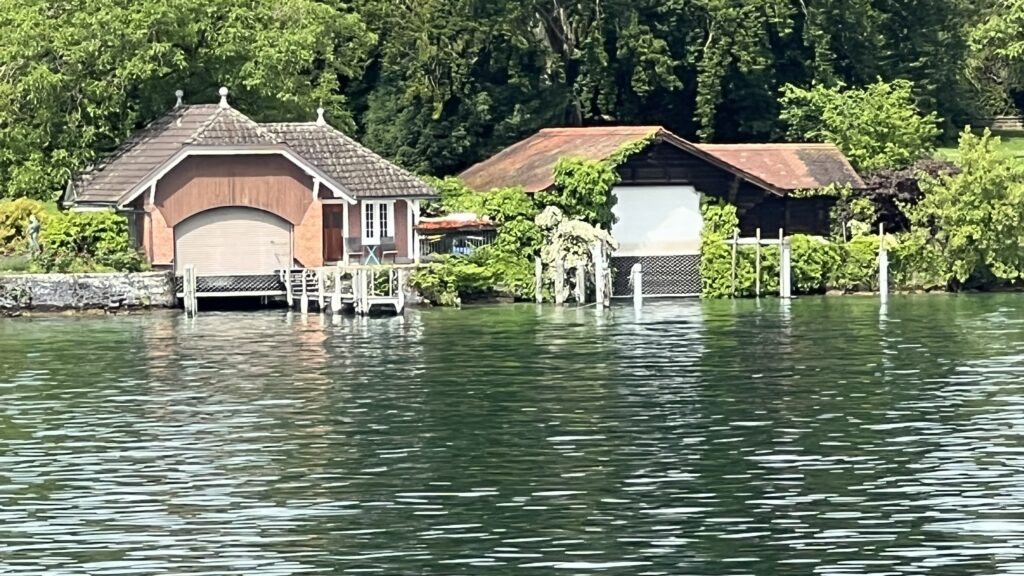
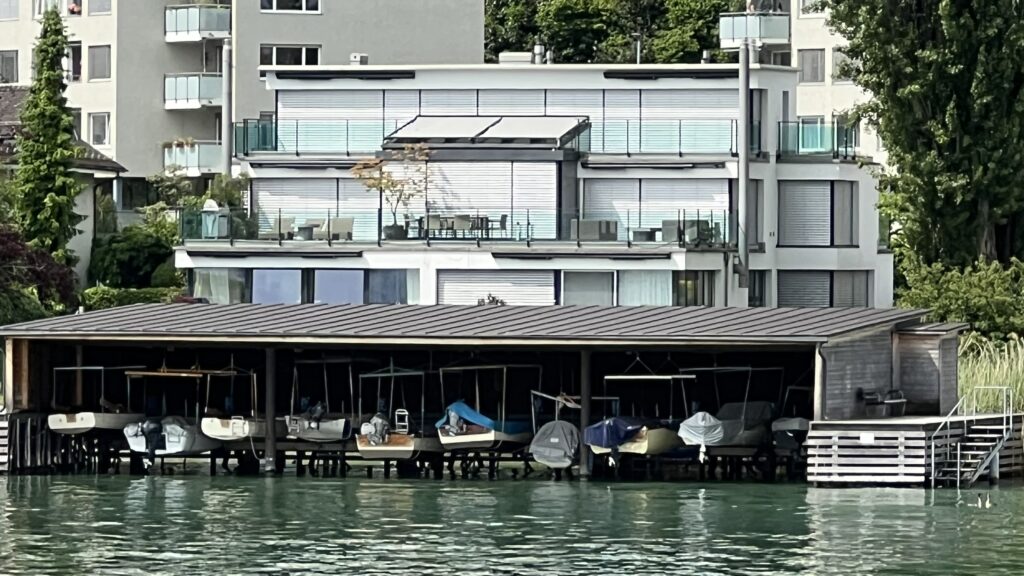
Zurich GuruWalk – is an international free tours community that connects travelers with guides around the world. Most tours are 2-3 hours long of walking in and around city center. At the end of the tour, tip the guide based on how much you enjoyed the walk (minimum recommended amount $10). Our walk was 2.5-hour long and the guide told us a lot of stories behind all the sites we had visited the previous day on our own. We learnt a lot of interesting information about Zurich on the tour –
- Oriel Windows
- Felix and Regula
- Wasserkirche (Water Church)
- Leninwohnung
- Lindenhof Fountain
- Napfgasse
GuruWalk, Oriel windows – The guide took us past a number of houses and buildings in the old city which had these windows. Oriel windows are windows that project out from the building wall, typically on the upper floors. Historically, these windows have been associated with wealth and status. They were popular in the 15th century, primarily for increasing light and space in a room. They were often found in castles, manor houses, and noble residences. In some cultures, like Islamic societies, they provided a way for women to see activities below while remaining unseen.
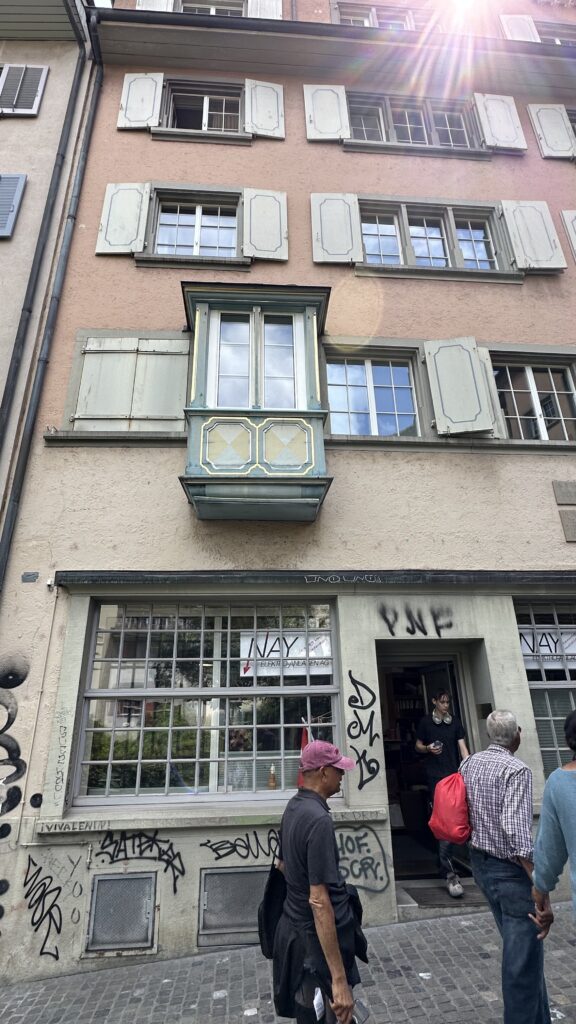
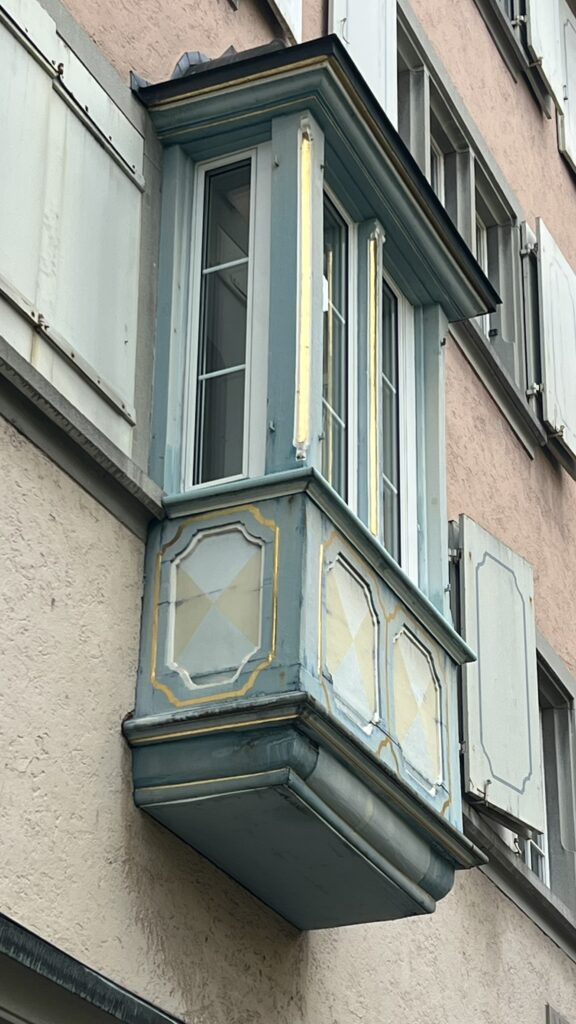
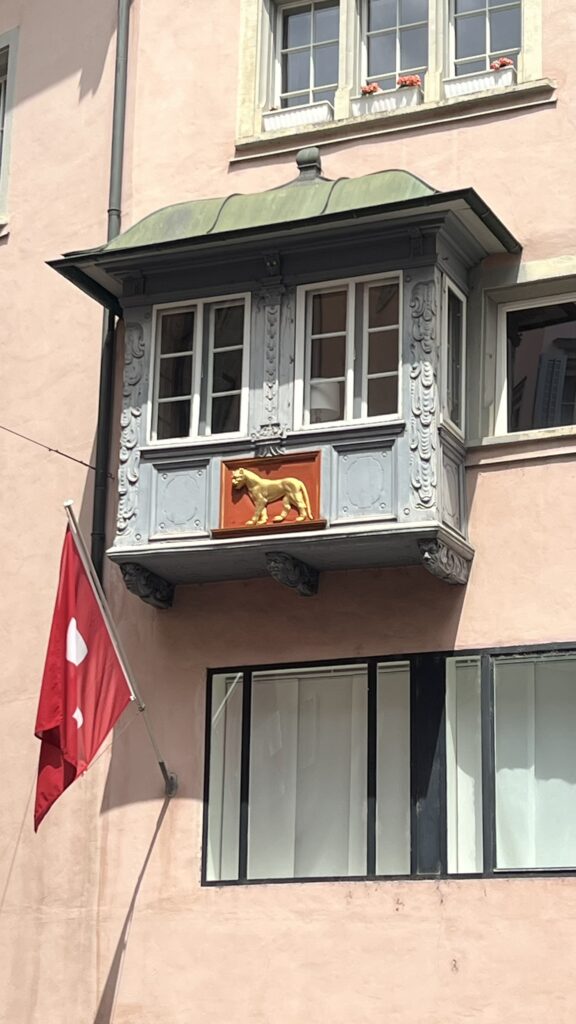
GuruWalk, Felix and Regula – The guide told us the story of Felix and Regula who are the patron saints of Zurich. The siblings and their servant Exuperantius, were beheaded in the third century for converting to Christianity. According to legend, after decapitation, they miraculously stood to their feet, picked up their own heads, walked forty paces uphill, and prayed before lying down in death. They were buried on the spot where they lay down on the hilltop which would become the site of the Grossmünster. The Wasserkirche was built at the site of their execution.
GuruWalk, Wasserkirche (Water Church) – The church was built in the 10th century and modified at various points, culminating in a complete reconstruction that was completed in 1486. Towards the end of the 15th century, The church was used as a warehouse and later a public library. As mentioned above – if legend is to be believed – the city’s saints Felix and Regula were executed by the Romans in the crypt of the church. After renovation in 1942, it has served as a place of worship and cultural purposes.
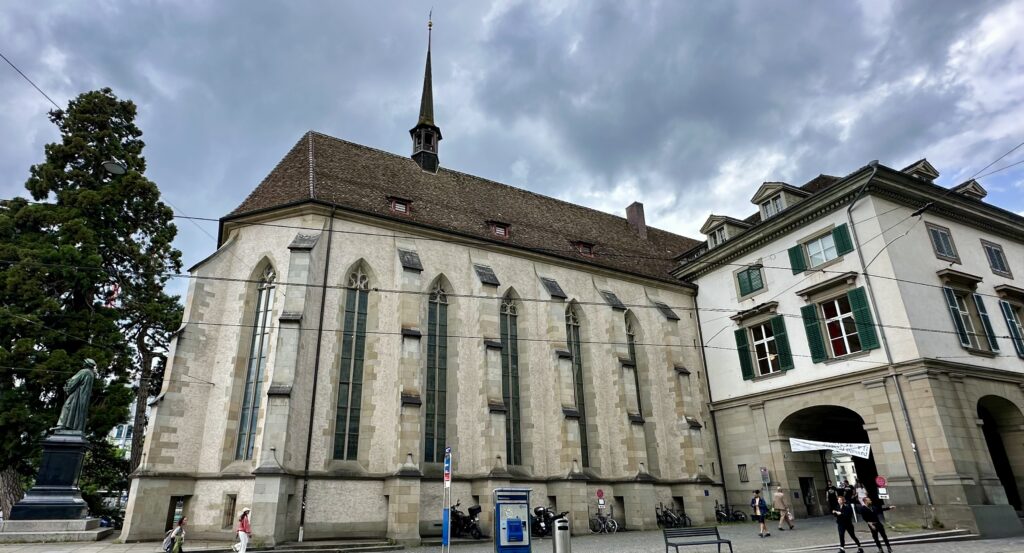
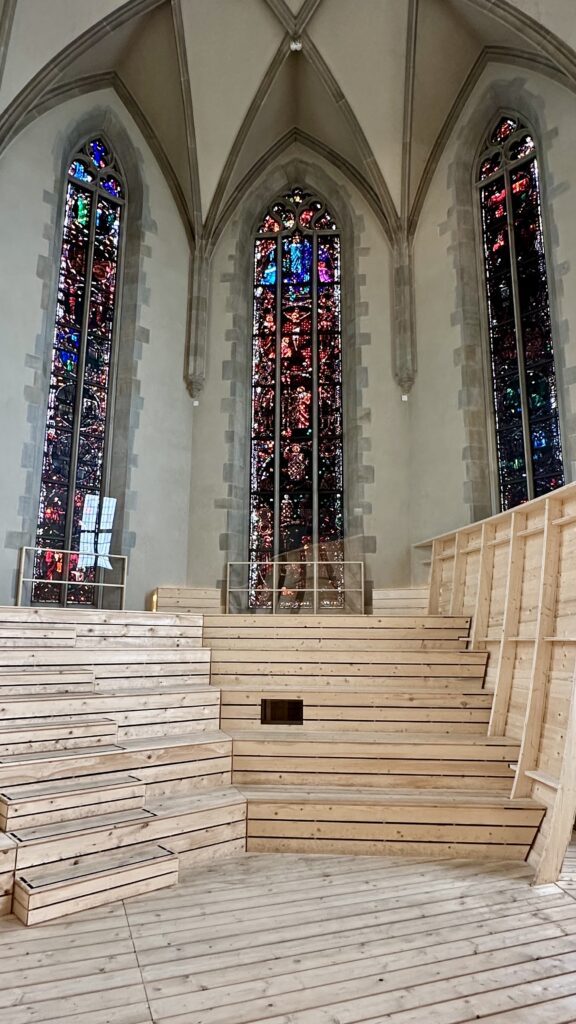
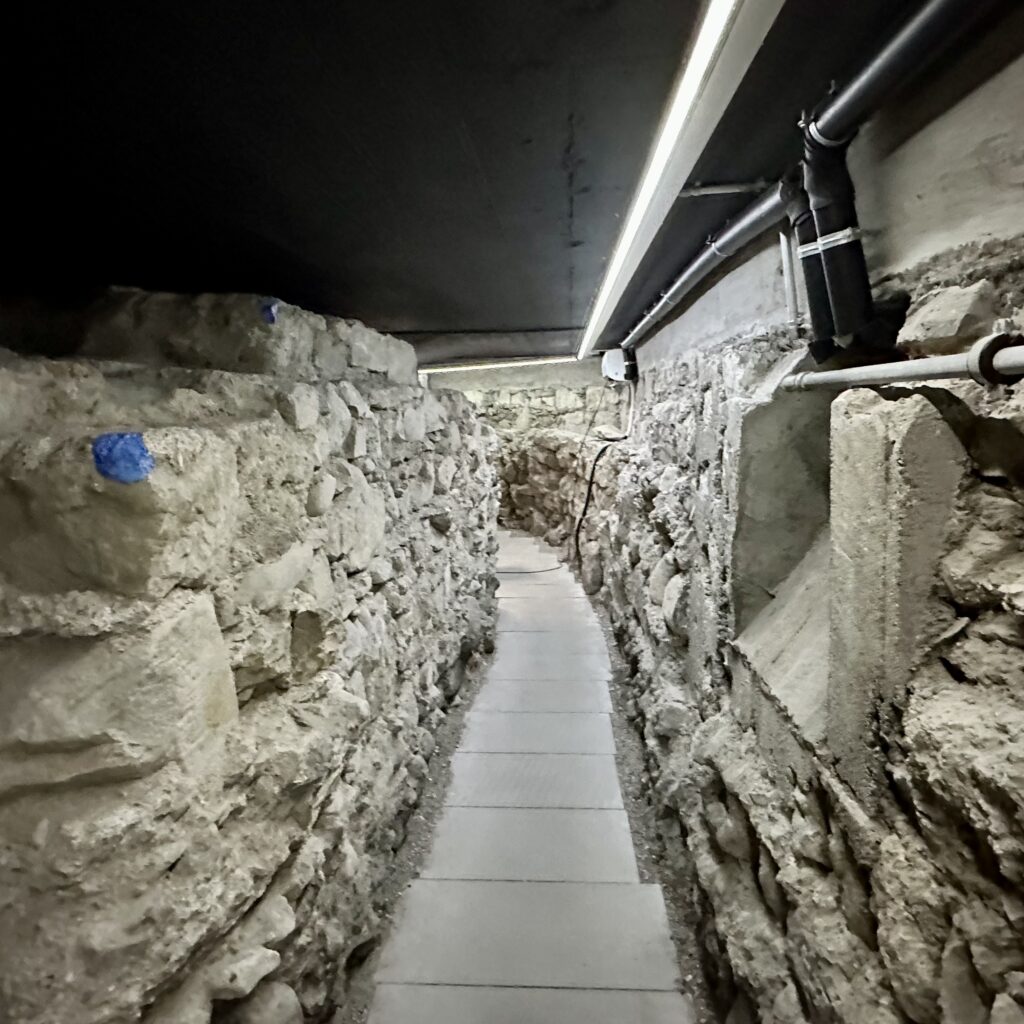
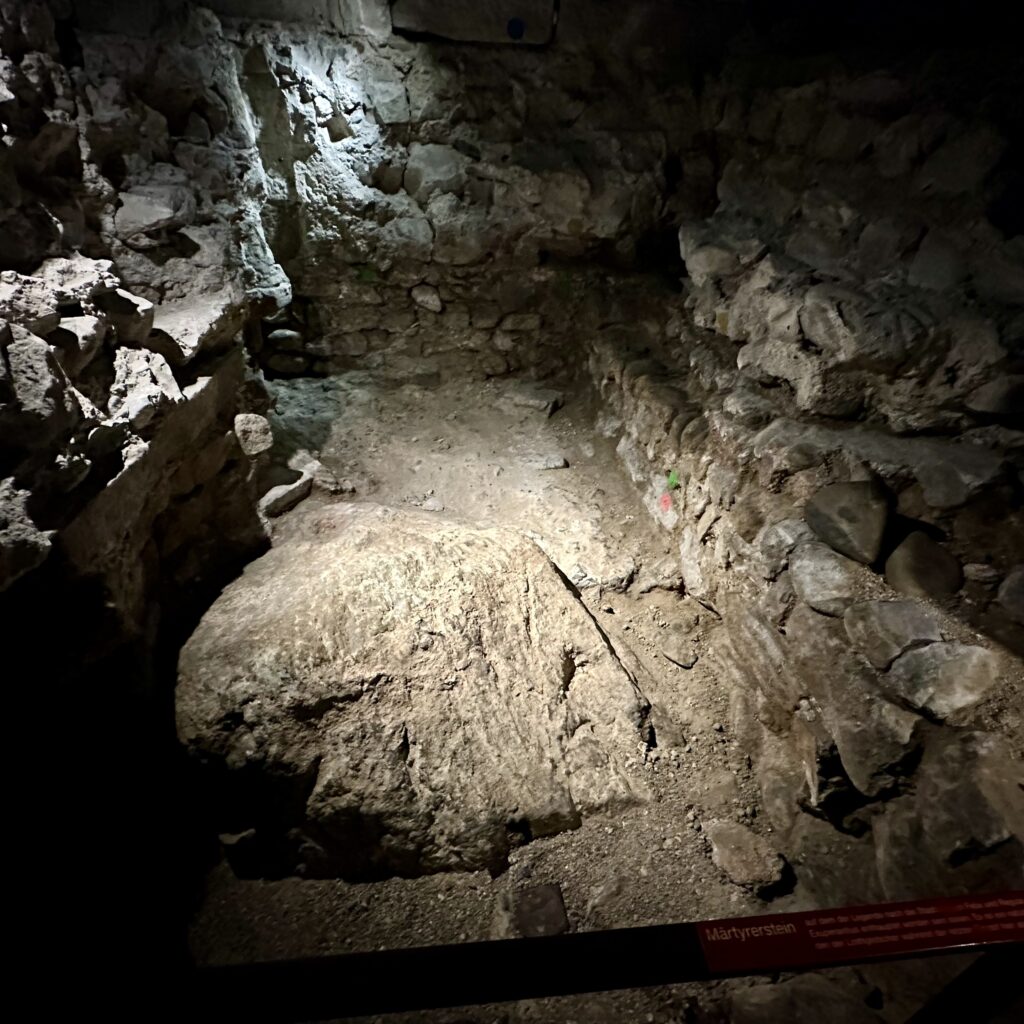
GuruWalk, Holy Trinity Fresco – This 19th century painting on the outside walls of Fraumünster showcases the Holy Trinity (God the Father, Son, and Holy Spirit) alongside Saints Felix and Regula, who are the patron saints of Zurich. This fresco is a prominent example of religious art within the church and is notable for its depiction of the Trinity and the inclusion of the city’s patron saints.
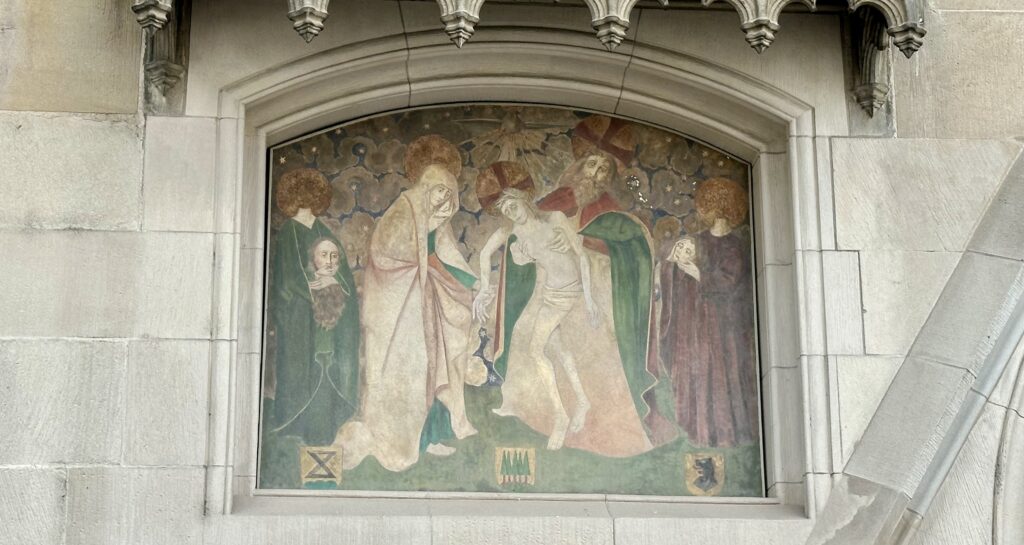
GuruWalk, Niederdorf (referred to as Dörfli by the locals), is a small district located within the old town. This area is the main destination for the city’s nightlife and it is home to many shops, restaurants, and scenic side streets. It gets its name from Niederdorfstrasse, the main pedestrian street that runs through the district.
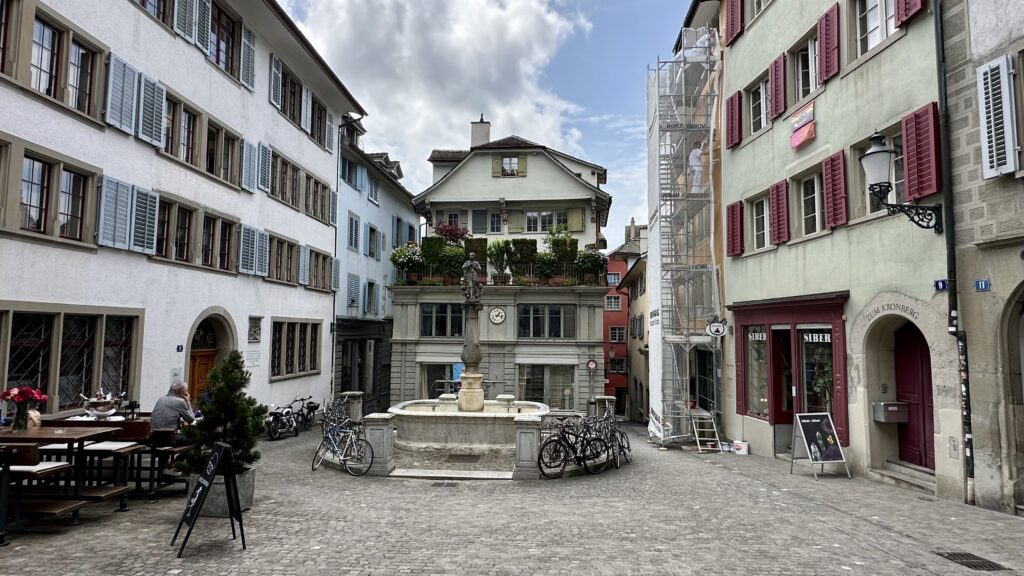
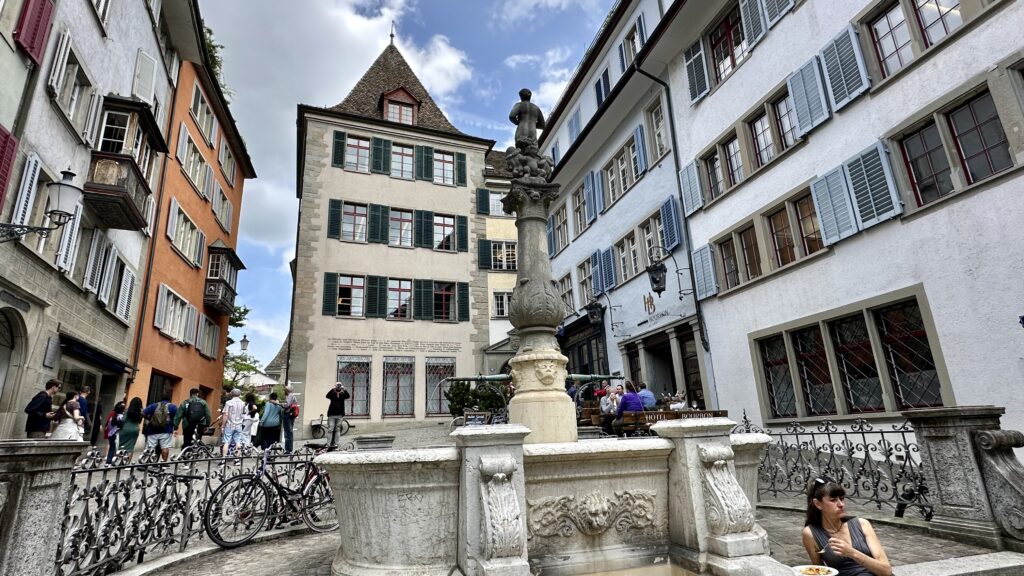
GuruWalk, Leninwohnung (Lenin’s flat) – The guide then took us to a place of historical significance – the Leninwohnung. Tucked away down a narrow alleyway just off Limmatquai Street is the apartment where Vladimir Lenin, the Russian revolutionary and politician, lived for a year before returning to Russia. Vladimir Lenin moved into this modest apartment with his wife in February 1916 after being forced out from Poland by World War I. During his time here, he penned many significant works including “Imperialism: The Highest Stage of Capitalism”, which played an instrumental role in shaping socialist thought. Lenin left Zurich on April 9th, 1917 aboard a sealed train provided by Germany in what would become one of history’s greatest political gambits. His return to Russia marked the beginning of a new era as he led the Bolsheviks through revolution and established Soviet power.
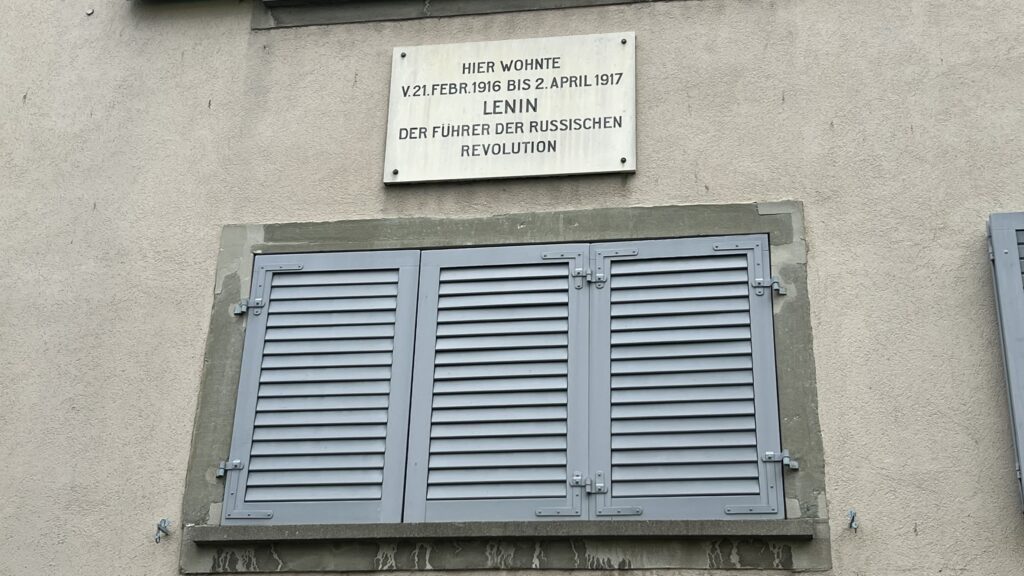
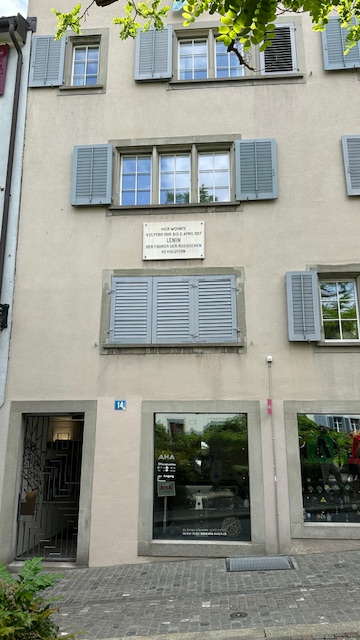
Visitors can visit this unassuming building whose interior has been preserved much as it was during Lenin’s stay; wooden floors creak underfoot while period furniture lends an air of authenticity. Photos adorn the walls showing images from both Lenin’s personal life and key moments in Russian history while informative displays offer insights into his work and political ideology.
GuruWalk, Lindenhof Fountain – or Hedwig Fountain at Lindenhof hill was built to honor Hedwig ab Burghalden and the brave women who defended and saved Zurich in the 13th century.
In 1292, Zurich went into a war with the house of Habsburg in nearby Winterthur. Since most of the men fought on the battlefield away from the city, Duke Albrecht I von Habsburg planned to seize the opportunity and take over Zurich. When the Duke and his forces arrived at the gates of Zurich, they saw a fully geared army with soldiers holding their weapons, waving flags, and beating drums. Calculating their odds, the Duke and his forces abandoned the siege and retreated. These threatening-looking warriors were the women of Zurich disguised as armed men and led by Hedwig ab Burghalden to defend the city. Due to their resourcefulness, bravery, and clever strategy, Zurich remained unharmed.
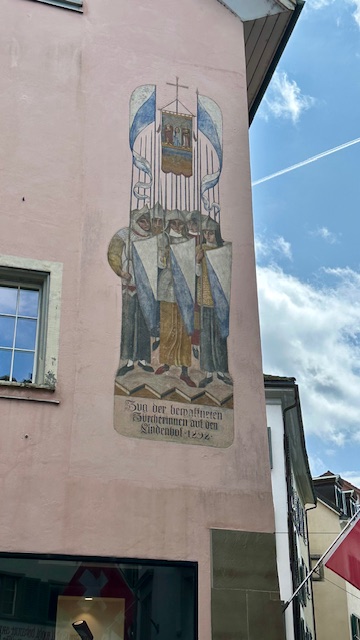
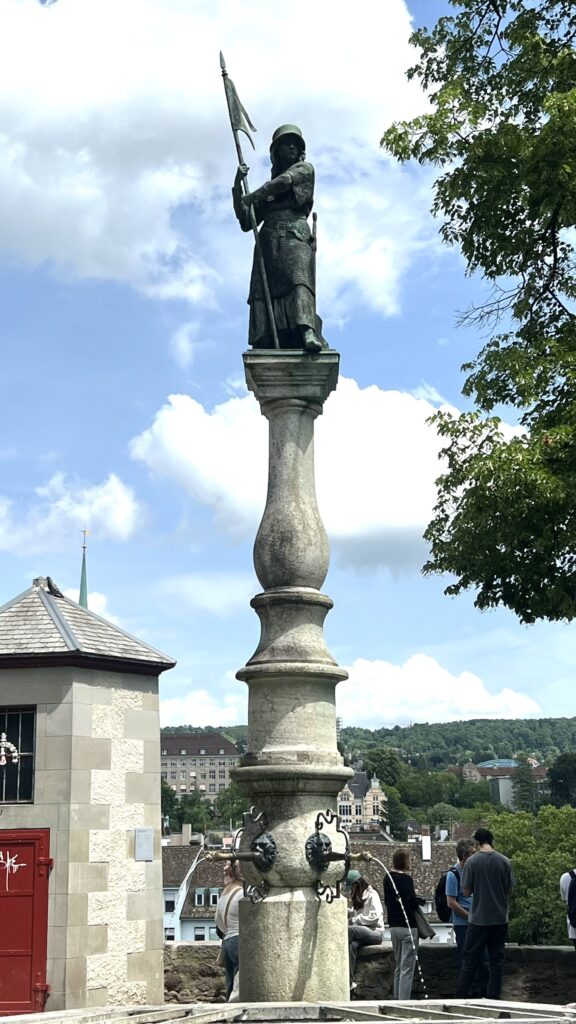
GuruWalk, Café & Conditorei 1842 – This cafe is located near Grossmünster and the guide recommended us to try out tea and cake. She also mentioned that the room on the first floor was worth checking out. After the tour, we did check it out. The Cafe itself was tastefully decorated, but we can’t say much about the tea or cake – after we were seated in the beautifully decorated room on the first floor, we waited for 20-25 minutes and then left as nobody came up to take our order.
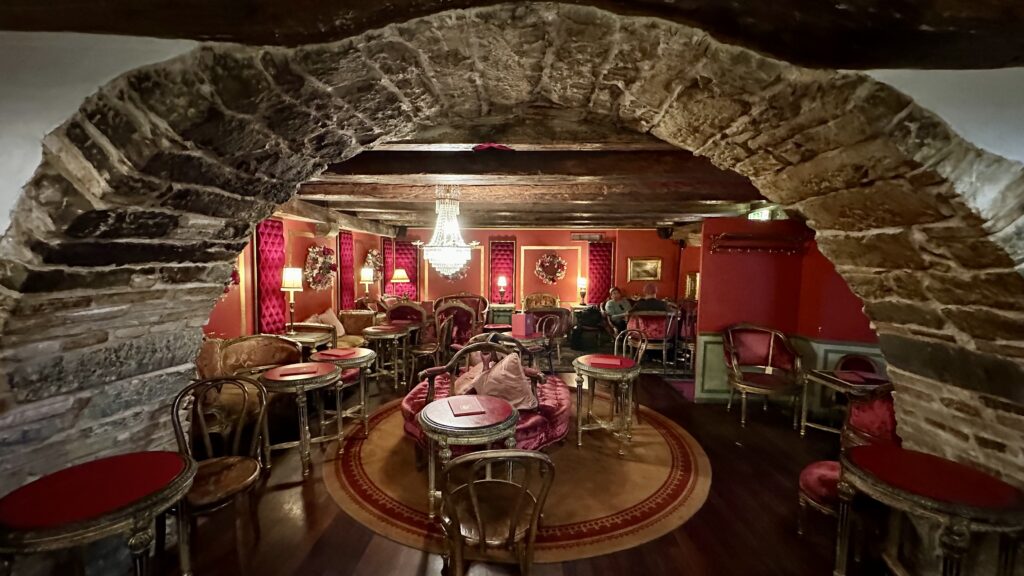
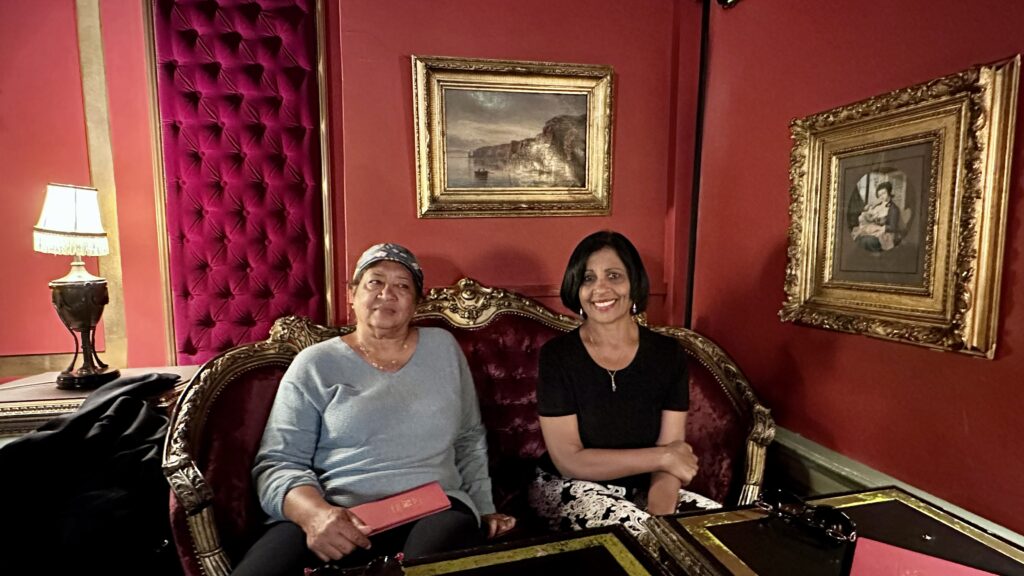
Fountain City Zurich – All over the city, top-quality drinking water flows out of fountains both big and small – and free of charge for everyone. Pictures of some of the fountains –
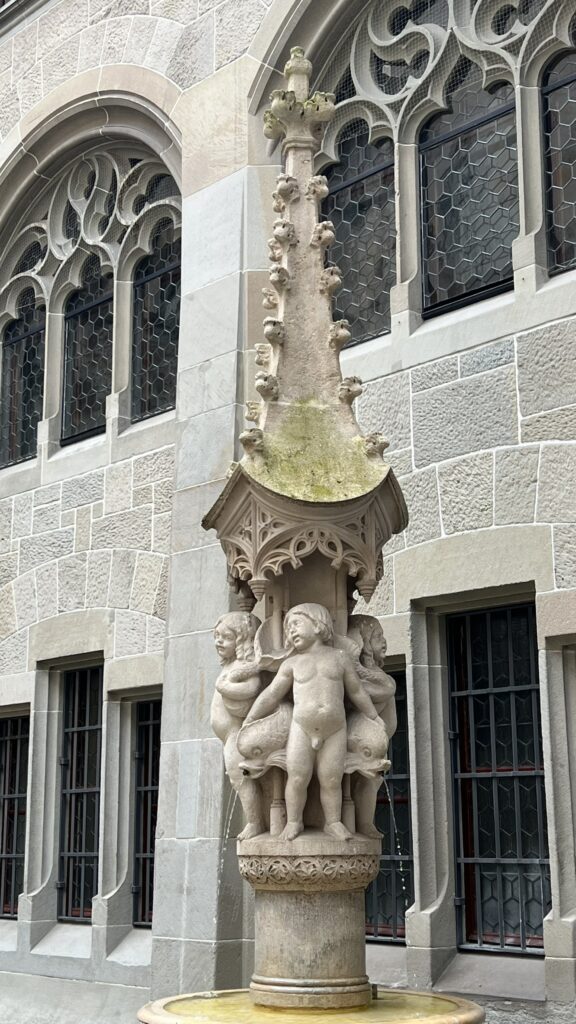
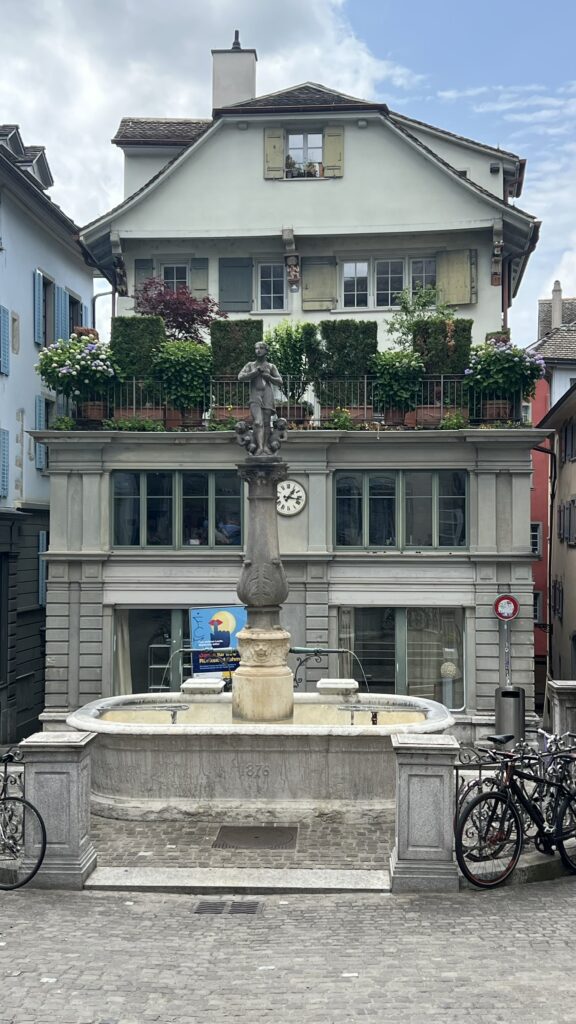
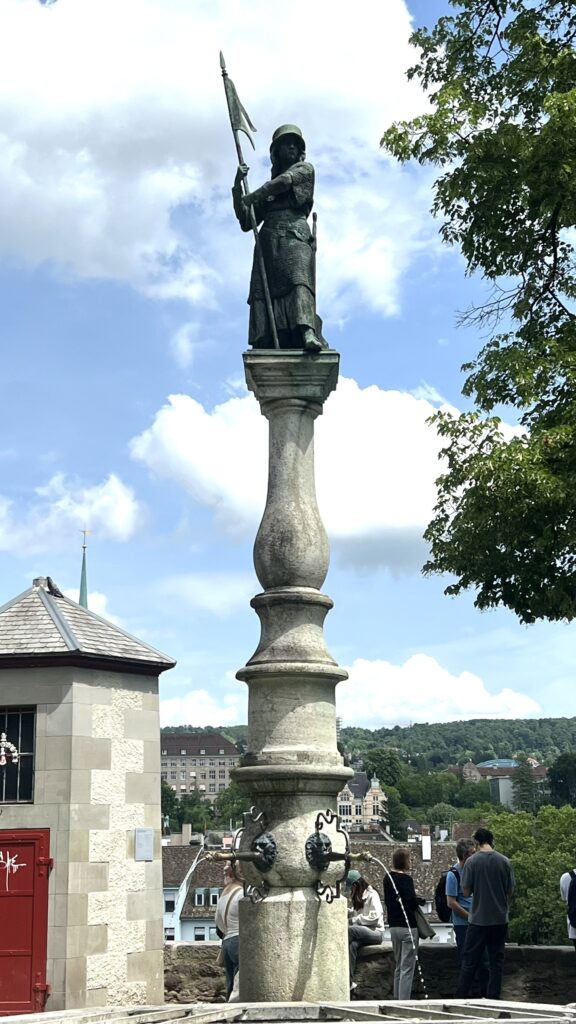
Also, check the section on Münsterhof plaza above, which has a very elegant fountain.
Uetliberg – We did not have time to visit this place, it was highly recommended by the GuruWalk guide. Uetliberg is a mountain in the Swiss plateau, part of the Albis chain, rising to 870m. To get here, you can take the train from Zürich (about 30 minutes) and then it is a 10-minute uphill walk to the viewpoint. The broad walkway leads to the summit restaurant, a glass-enclosed space with beautiful views of the city and lake below.